Shows
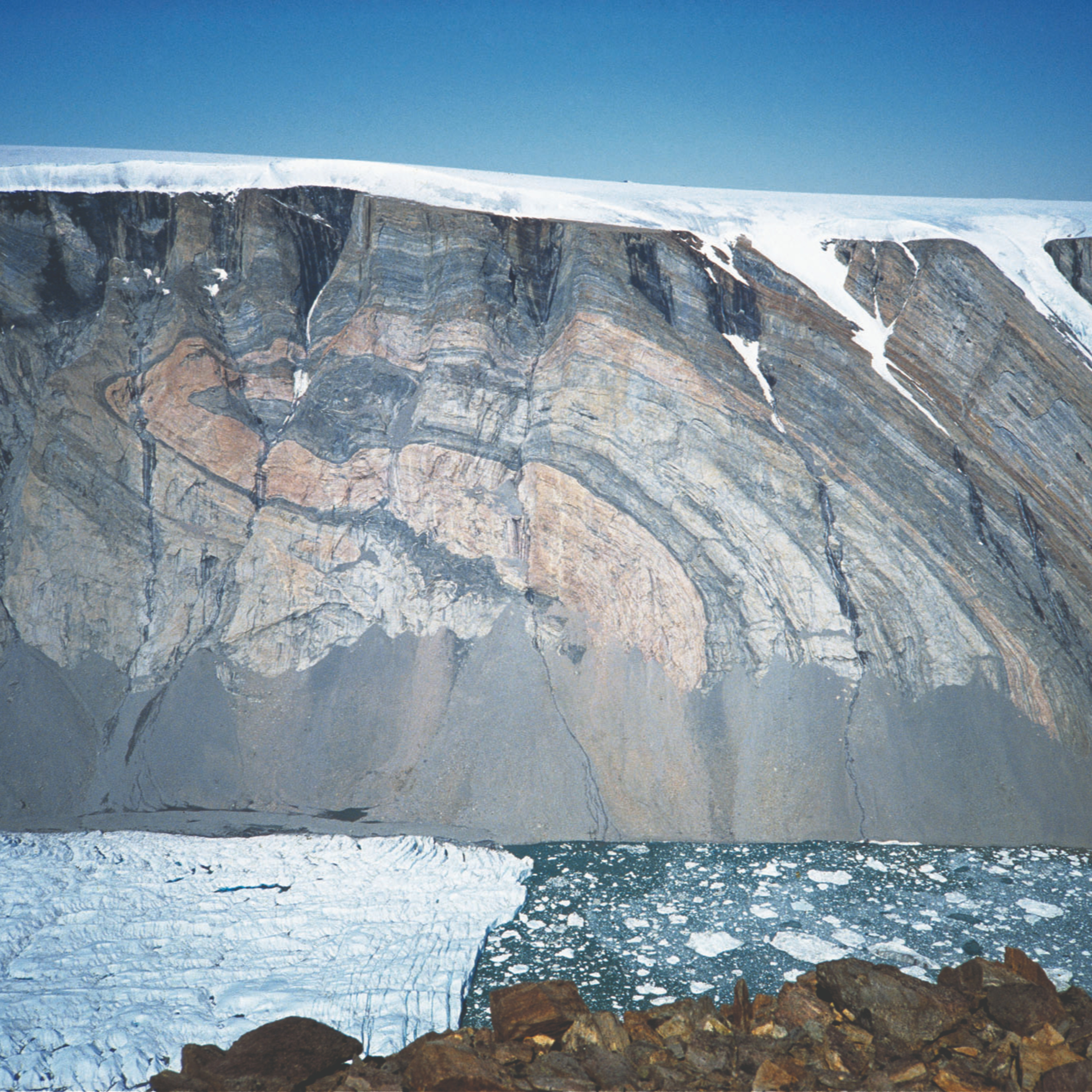 Geology BitesRob Strachan on the Caledonian OrogenyThe Caledonian orogeny is one of the most recent extinct mountain-building events. It took place in several phases during the three-way collision of continental blocks called Laurentia, Baltica, and Avalonia during the early stages of the assembly of the supercontinent Pangea. In the process, Himalayan-scale mountains were formed. While these mountains have been worn down today, we still see plenty of evidence for their existence in locations straddling the Atlantic and the Norwegian Sea. In the podcast, Rob Strachan describes the tectonic movements that led to the orogen and explains how we can reconstruct the sequence of events that...2024-12-1039 min
Geology BitesRob Strachan on the Caledonian OrogenyThe Caledonian orogeny is one of the most recent extinct mountain-building events. It took place in several phases during the three-way collision of continental blocks called Laurentia, Baltica, and Avalonia during the early stages of the assembly of the supercontinent Pangea. In the process, Himalayan-scale mountains were formed. While these mountains have been worn down today, we still see plenty of evidence for their existence in locations straddling the Atlantic and the Norwegian Sea. In the podcast, Rob Strachan describes the tectonic movements that led to the orogen and explains how we can reconstruct the sequence of events that...2024-12-1039 min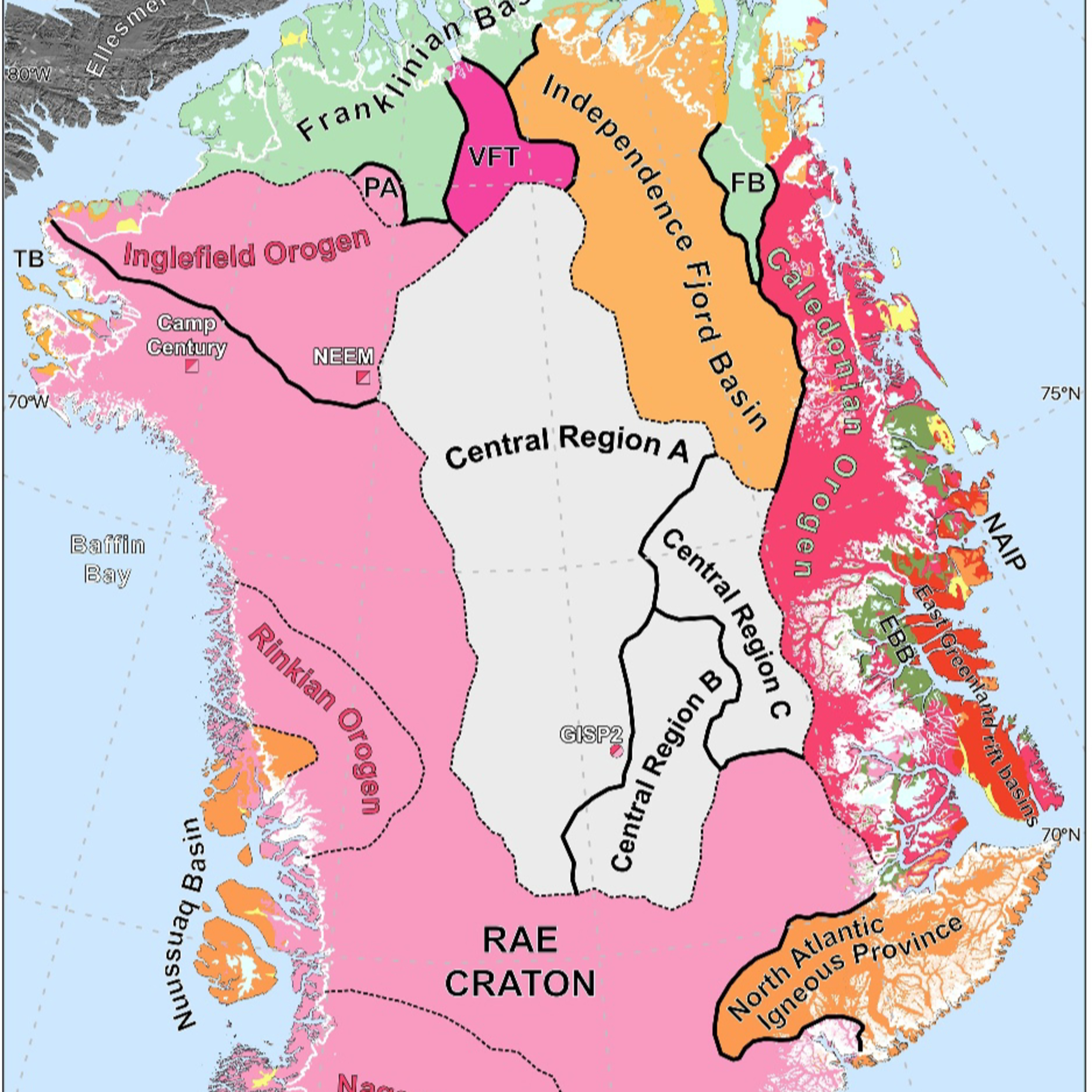 Geology BitesJoe MacGregor on Mapping the Geology of Greenland Below the IceWith most of Greenland buried by kilometers of ice, obtaining direct information about its geology is challenging. But we can learn a lot from measurements of the island’s geophysical properties — seismic, gravity, magnetic from airborne and satellite surveys and from its topography, which we can see relatively well through the ice using radar. In the podcast, Joe MacGregor explains how he created a new map of Greenland’s geology and speculates on what we can learn from it.
MacGregor is a Research Physical Scientist at NASA’s Goddard Space Flight Center.2024-11-1431 min
Geology BitesJoe MacGregor on Mapping the Geology of Greenland Below the IceWith most of Greenland buried by kilometers of ice, obtaining direct information about its geology is challenging. But we can learn a lot from measurements of the island’s geophysical properties — seismic, gravity, magnetic from airborne and satellite surveys and from its topography, which we can see relatively well through the ice using radar. In the podcast, Joe MacGregor explains how he created a new map of Greenland’s geology and speculates on what we can learn from it.
MacGregor is a Research Physical Scientist at NASA’s Goddard Space Flight Center.2024-11-1431 min Geology BitesAdam Simon on Battery MetalsAs we wean ourselves away from fossil fuels and ramp up our reliance on alternatives, batteries become ever more important for two main reasons. First, we need grid-scale batteries to store excess electricity from time-varying sources such as wind and solar. Second, we use them to power electric vehicles, which we are now producing at the rate of about 15 million a year worldwide.
So far, the battery of choice is the lithium-ion battery. In addition to lithium, these rely on four metals — copper, nickel, cobalt, and manganese. In the podcast, Adam Simon explains the role these metals pl...2024-10-2334 min
Geology BitesAdam Simon on Battery MetalsAs we wean ourselves away from fossil fuels and ramp up our reliance on alternatives, batteries become ever more important for two main reasons. First, we need grid-scale batteries to store excess electricity from time-varying sources such as wind and solar. Second, we use them to power electric vehicles, which we are now producing at the rate of about 15 million a year worldwide.
So far, the battery of choice is the lithium-ion battery. In addition to lithium, these rely on four metals — copper, nickel, cobalt, and manganese. In the podcast, Adam Simon explains the role these metals pl...2024-10-2334 min Geology BitesRufus Catchings on Pinning Down California's FaultsKnowing exactly where faults are located is important both for scientific reasons and for assessing how much damage a fault could inflict if it ruptured and caused an earthquake. In the podcast, Rufus Catchings describes how we can use natural and artificial sources of seismic waves to create high-resolution images of fault profiles. He also explains how faults can act as seismic waveguides, an effect that enables us to determine whether faults are connected to each other. In Napa, a famous wine-growing area near San Francisco, he used guided waves to determine that an active fault is actually ten...2024-09-2133 min
Geology BitesRufus Catchings on Pinning Down California's FaultsKnowing exactly where faults are located is important both for scientific reasons and for assessing how much damage a fault could inflict if it ruptured and caused an earthquake. In the podcast, Rufus Catchings describes how we can use natural and artificial sources of seismic waves to create high-resolution images of fault profiles. He also explains how faults can act as seismic waveguides, an effect that enables us to determine whether faults are connected to each other. In Napa, a famous wine-growing area near San Francisco, he used guided waves to determine that an active fault is actually ten...2024-09-2133 min Geology BitesSara Seager on Exoplanet GeologyDuring the past couple of decades, we have discovered that stars with planetary systems are not rare, exceptional cases, as we once assumed, but actually quite commonplace. However, because exoplanets are like fireflies next to blinding searchlights, they are incredibly difficult to study. Yet, as Sara Seager explains, we are making astonishing progress. Various ingenious methods and the use of powerful space telescopes enable us to learn about exoplanet atmospheres and even, in some cases, what their surfaces consist of.
Sara Seager’s research concentrates on the detection and analysis of exoplanet atmospheres, and she has just wo...2024-09-0134 min
Geology BitesSara Seager on Exoplanet GeologyDuring the past couple of decades, we have discovered that stars with planetary systems are not rare, exceptional cases, as we once assumed, but actually quite commonplace. However, because exoplanets are like fireflies next to blinding searchlights, they are incredibly difficult to study. Yet, as Sara Seager explains, we are making astonishing progress. Various ingenious methods and the use of powerful space telescopes enable us to learn about exoplanet atmospheres and even, in some cases, what their surfaces consist of.
Sara Seager’s research concentrates on the detection and analysis of exoplanet atmospheres, and she has just wo...2024-09-0134 min Geology BitesEvan Smith on Diamonds from the Deep MantleWe have only a tantalizingly small number of sources of information about the Earth’s deep mantle. One of these comes from the rare diamonds that form at depths of about 650 km and make their way up to the base of the lithosphere, and then later to the surface via rare volcanic eruptions of kimberlite magma. In the podcast, Evan Smith talks about a new class of large gem-quality deep-mantle diamonds that he and his coworkers discovered in 2016. Inclusions within these diamonds serve as messenger capsules from the deep mantle. They show an unmistakable genetic link to subducted oceanic sl...2024-08-1434 min
Geology BitesEvan Smith on Diamonds from the Deep MantleWe have only a tantalizingly small number of sources of information about the Earth’s deep mantle. One of these comes from the rare diamonds that form at depths of about 650 km and make their way up to the base of the lithosphere, and then later to the surface via rare volcanic eruptions of kimberlite magma. In the podcast, Evan Smith talks about a new class of large gem-quality deep-mantle diamonds that he and his coworkers discovered in 2016. Inclusions within these diamonds serve as messenger capsules from the deep mantle. They show an unmistakable genetic link to subducted oceanic sl...2024-08-1434 min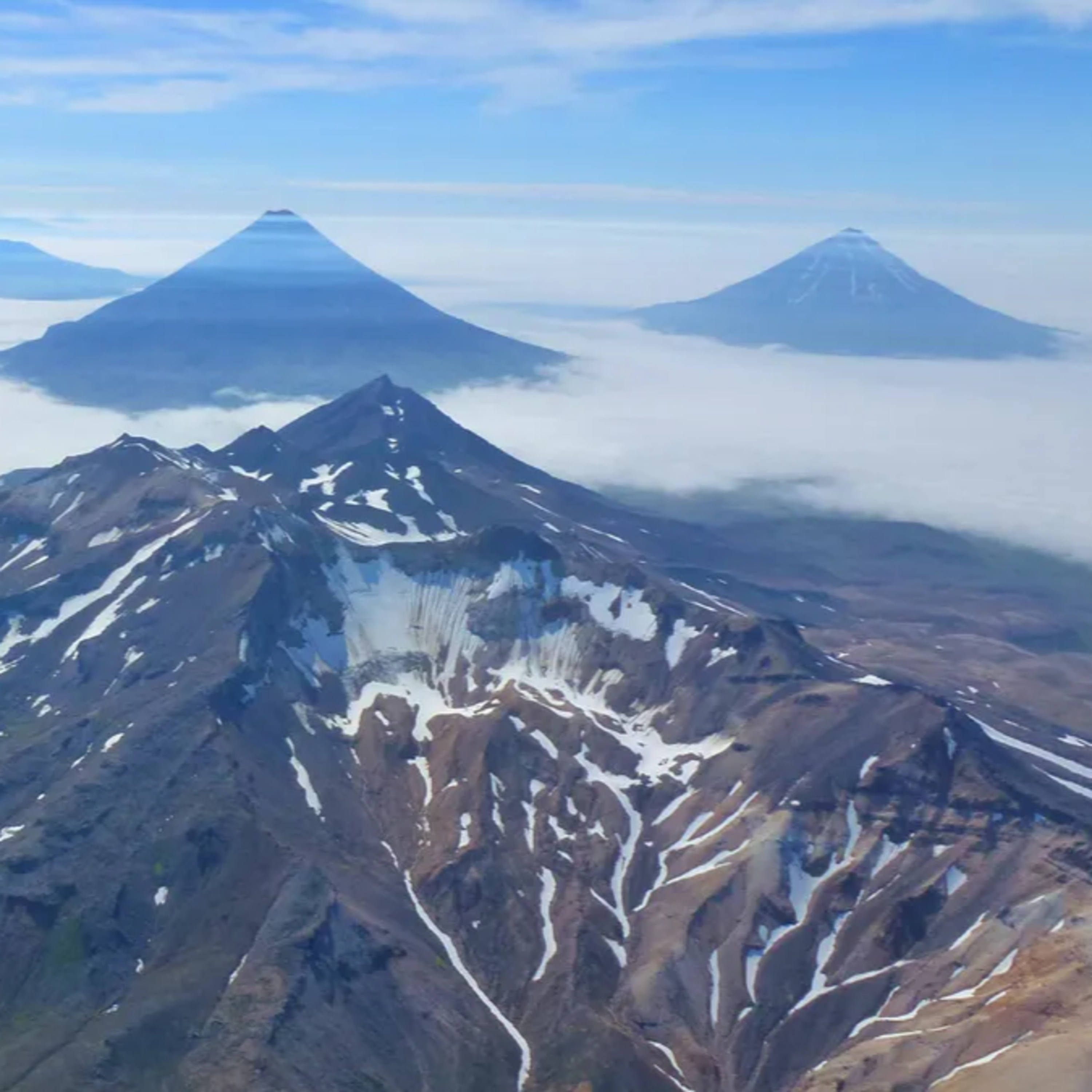 Geology BitesRoberta Rudnick on the Continental Crustal Composition ParadoxContinental crust is derived from magmas that come from the mantle. So, naively, one might expect it to mirror the composition of the mantle. But our measurements indicate that it does not. Continental crust contains significantly more silica and less magnesium and iron than the mantle. How can we be sure this discrepancy is real, and what do we think explains it? In the podcast, Roberta Rudnick presents our current thinking about these questions. Surprisingly, more than 30 years after she and others first identified the so-called continental crustal composition paradox, there is still no consensus among geologists as to...2024-07-3127 min
Geology BitesRoberta Rudnick on the Continental Crustal Composition ParadoxContinental crust is derived from magmas that come from the mantle. So, naively, one might expect it to mirror the composition of the mantle. But our measurements indicate that it does not. Continental crust contains significantly more silica and less magnesium and iron than the mantle. How can we be sure this discrepancy is real, and what do we think explains it? In the podcast, Roberta Rudnick presents our current thinking about these questions. Surprisingly, more than 30 years after she and others first identified the so-called continental crustal composition paradox, there is still no consensus among geologists as to...2024-07-3127 min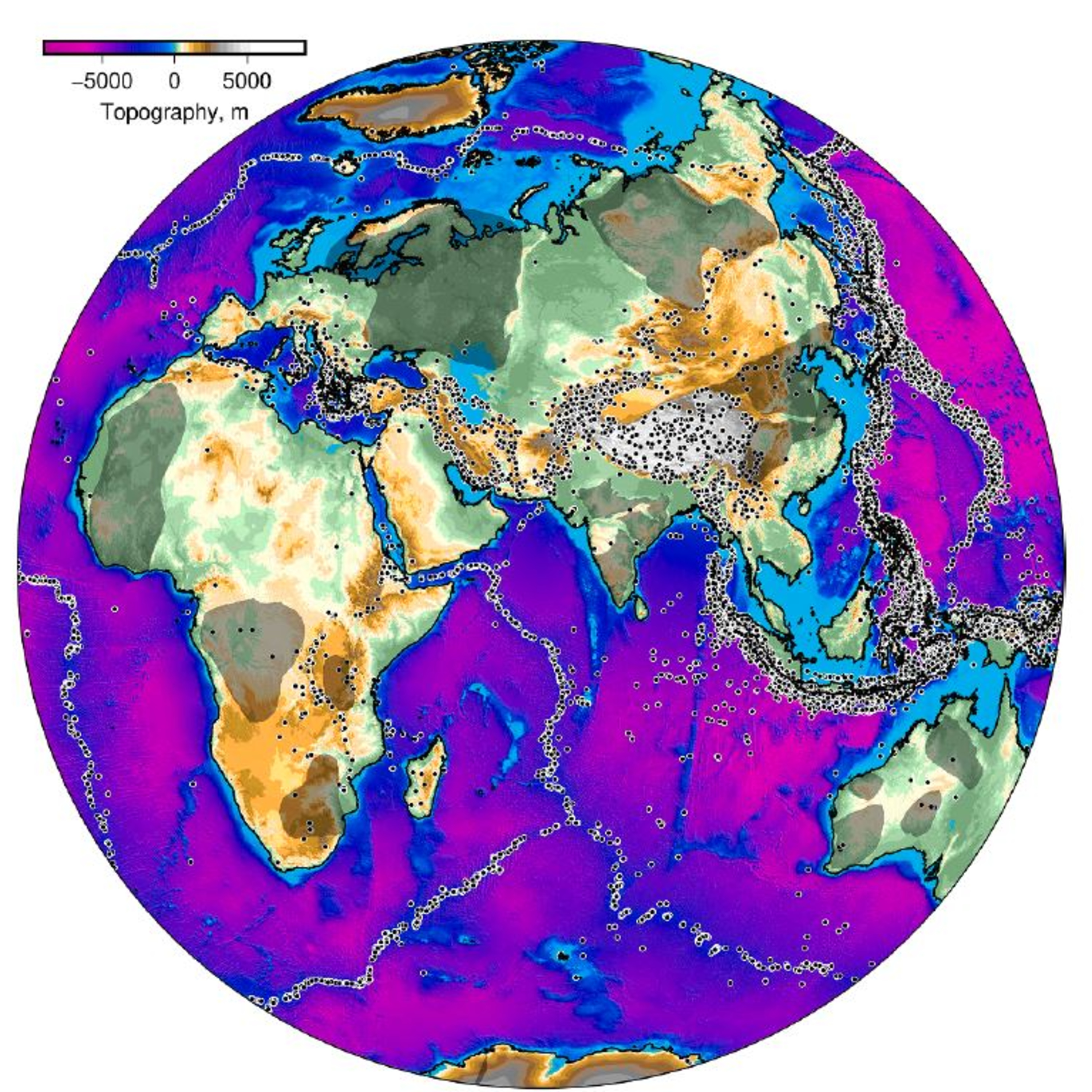 Geology BitesAlex Copley on Soft ContinentsWe tend to think of continental tectonic plates as rigid caps that float on the asthenospheric mantle, much like oceanic plates. But while some continental regions have the most rigid rocks on the planet, wide swathes of the continents are not rigid at all. In the podcast, Alex Copley explains how this differentiation comes about and points to evidence that the responsible processes have been operating since the Archean.
Copley is Professor of Tectonics in the Department of Earth Sciences at the University of Cambridge.2024-07-1532 min
Geology BitesAlex Copley on Soft ContinentsWe tend to think of continental tectonic plates as rigid caps that float on the asthenospheric mantle, much like oceanic plates. But while some continental regions have the most rigid rocks on the planet, wide swathes of the continents are not rigid at all. In the podcast, Alex Copley explains how this differentiation comes about and points to evidence that the responsible processes have been operating since the Archean.
Copley is Professor of Tectonics in the Department of Earth Sciences at the University of Cambridge.2024-07-1532 min Geology BitesShanan Peters on Quantifying the Global Sedimentary Rock RecordShanan Peters believes we need to assemble a global record of sedimentary rock coverage over geological time. As he explains in the podcast, such a record enables us to disentangle real changes in the long-term evolution of the Earth-life system from biases introduced by the unevenness and incompleteness of the sedimentary record. To this end, he and his team have established Macrostrat, a platform for the aggregation and distribution of our knowledge about the spatial and temporal distribution of sedimentary rocks. In the podcast, he describes some important findings made possible by Macrostrat. One of them is that gaps...2024-07-0127 min
Geology BitesShanan Peters on Quantifying the Global Sedimentary Rock RecordShanan Peters believes we need to assemble a global record of sedimentary rock coverage over geological time. As he explains in the podcast, such a record enables us to disentangle real changes in the long-term evolution of the Earth-life system from biases introduced by the unevenness and incompleteness of the sedimentary record. To this end, he and his team have established Macrostrat, a platform for the aggregation and distribution of our knowledge about the spatial and temporal distribution of sedimentary rocks. In the podcast, he describes some important findings made possible by Macrostrat. One of them is that gaps...2024-07-0127 min Geology BitesPaul Smith on the Cambrian ExplosionComplex life did not start in the Cambrian - it was there in the Ediacaran, the period that preceded the Cambrian. And the physical and chemical environment that prevailed in the early to middle Cambrian may well have arisen at earlier times in Earth history. So what exactly was the Cambrian explosion? And what made it happen when it did, between 541 and 530 million years ago? Many explanations have been proposed, but, as Paul Smith explains in the podcast, they tend to rely on single lines of evidence, such as geological, geochemical, or biological. He favors explanations that involve interaction...2024-06-0832 min
Geology BitesPaul Smith on the Cambrian ExplosionComplex life did not start in the Cambrian - it was there in the Ediacaran, the period that preceded the Cambrian. And the physical and chemical environment that prevailed in the early to middle Cambrian may well have arisen at earlier times in Earth history. So what exactly was the Cambrian explosion? And what made it happen when it did, between 541 and 530 million years ago? Many explanations have been proposed, but, as Paul Smith explains in the podcast, they tend to rely on single lines of evidence, such as geological, geochemical, or biological. He favors explanations that involve interaction...2024-06-0832 min Geology BitesScott Bolton on the Most Volcanically Active Body in the Solar SystemJupiter's innermost Galilean moon, Io, is peppered with volcanos that are erupting almost all the time. In this episode, Scott Bolton, Principal Investigator of NASA's Juno mission to Jupiter, describes what we're learning from this space probe.
Since its arrival in 2017, its orbit around the giant planet has progressively shifted to take it close to Jupiter’s moons and rings. In December 2023 and February 2024, it flew by Io, approaching within a distance of only 1,500 km. This enabled Juno to capture high-resolution imagery of its constantly changing surface, including hitherto unseen regions near its poles. As di...2024-05-2524 min
Geology BitesScott Bolton on the Most Volcanically Active Body in the Solar SystemJupiter's innermost Galilean moon, Io, is peppered with volcanos that are erupting almost all the time. In this episode, Scott Bolton, Principal Investigator of NASA's Juno mission to Jupiter, describes what we're learning from this space probe.
Since its arrival in 2017, its orbit around the giant planet has progressively shifted to take it close to Jupiter’s moons and rings. In December 2023 and February 2024, it flew by Io, approaching within a distance of only 1,500 km. This enabled Juno to capture high-resolution imagery of its constantly changing surface, including hitherto unseen regions near its poles. As di...2024-05-2524 min Geology BitesBob White on How Magma Moves in the CrustWe know that most magma originates in the Earth’s mantle. As it pushes up through the many kilometers of lithosphere to the surface, it pauses in one or more magma chambers or partially melted mush zones for periods of up to a few millennia before erupting. But while we have seismic evidence and models and support this picture, we have not hitherto been able to watch how magma actually moves in the upper mantle and crust.
Bob White has set out to change that. Using a dense array of seismometers, he has been able to pinpoint th...2024-05-0636 min
Geology BitesBob White on How Magma Moves in the CrustWe know that most magma originates in the Earth’s mantle. As it pushes up through the many kilometers of lithosphere to the surface, it pauses in one or more magma chambers or partially melted mush zones for periods of up to a few millennia before erupting. But while we have seismic evidence and models and support this picture, we have not hitherto been able to watch how magma actually moves in the upper mantle and crust.
Bob White has set out to change that. Using a dense array of seismometers, he has been able to pinpoint th...2024-05-0636 min Geology BitesRichard Ernst on Large Igneous ProvincesAt roughly 15-25-million-year intervals since the Archean, huge volumes of lava have spewed onto the Earth’s surface. These form the large igneous provinces, which are called flood basalts when they occur on continents. As Richard Ernst explains in the podcast, the eruption of a large igneous province can initiate the rifting of continents, disrupt the environment enough to cause a mass extinction, and promote mineralization that produces valuable mineral resources.
Richard Ernst studies the huge volcanic events called Large Igneous Provinces (LIPs) — their structure, distribution, and origin as well as their connection with mineral, metal, and...2024-04-1031 min
Geology BitesRichard Ernst on Large Igneous ProvincesAt roughly 15-25-million-year intervals since the Archean, huge volumes of lava have spewed onto the Earth’s surface. These form the large igneous provinces, which are called flood basalts when they occur on continents. As Richard Ernst explains in the podcast, the eruption of a large igneous province can initiate the rifting of continents, disrupt the environment enough to cause a mass extinction, and promote mineralization that produces valuable mineral resources.
Richard Ernst studies the huge volcanic events called Large Igneous Provinces (LIPs) — their structure, distribution, and origin as well as their connection with mineral, metal, and...2024-04-1031 min Geology BitesDamian Nance on What Drives the Supercontinent CyclePerhaps as many as five times over the course of Earth history, most of the continents gathered together to form a supercontinent. The supercontinents lasted on the order of a hundred million years before breaking apart and dispersing the continents. For decades, we theorized that this cycle of amalgamation and breakup was caused by near-surface tectonic processes such as subduction that swallowed the oceans between the continents and upper mantle convection that triggered the rifting that split the supercontinents apart. As Damian Nance explains in the podcast, newly acquired evidence suggests a very different picture in which the supercontinent...2024-02-2435 min
Geology BitesDamian Nance on What Drives the Supercontinent CyclePerhaps as many as five times over the course of Earth history, most of the continents gathered together to form a supercontinent. The supercontinents lasted on the order of a hundred million years before breaking apart and dispersing the continents. For decades, we theorized that this cycle of amalgamation and breakup was caused by near-surface tectonic processes such as subduction that swallowed the oceans between the continents and upper mantle convection that triggered the rifting that split the supercontinents apart. As Damian Nance explains in the podcast, newly acquired evidence suggests a very different picture in which the supercontinent...2024-02-2435 min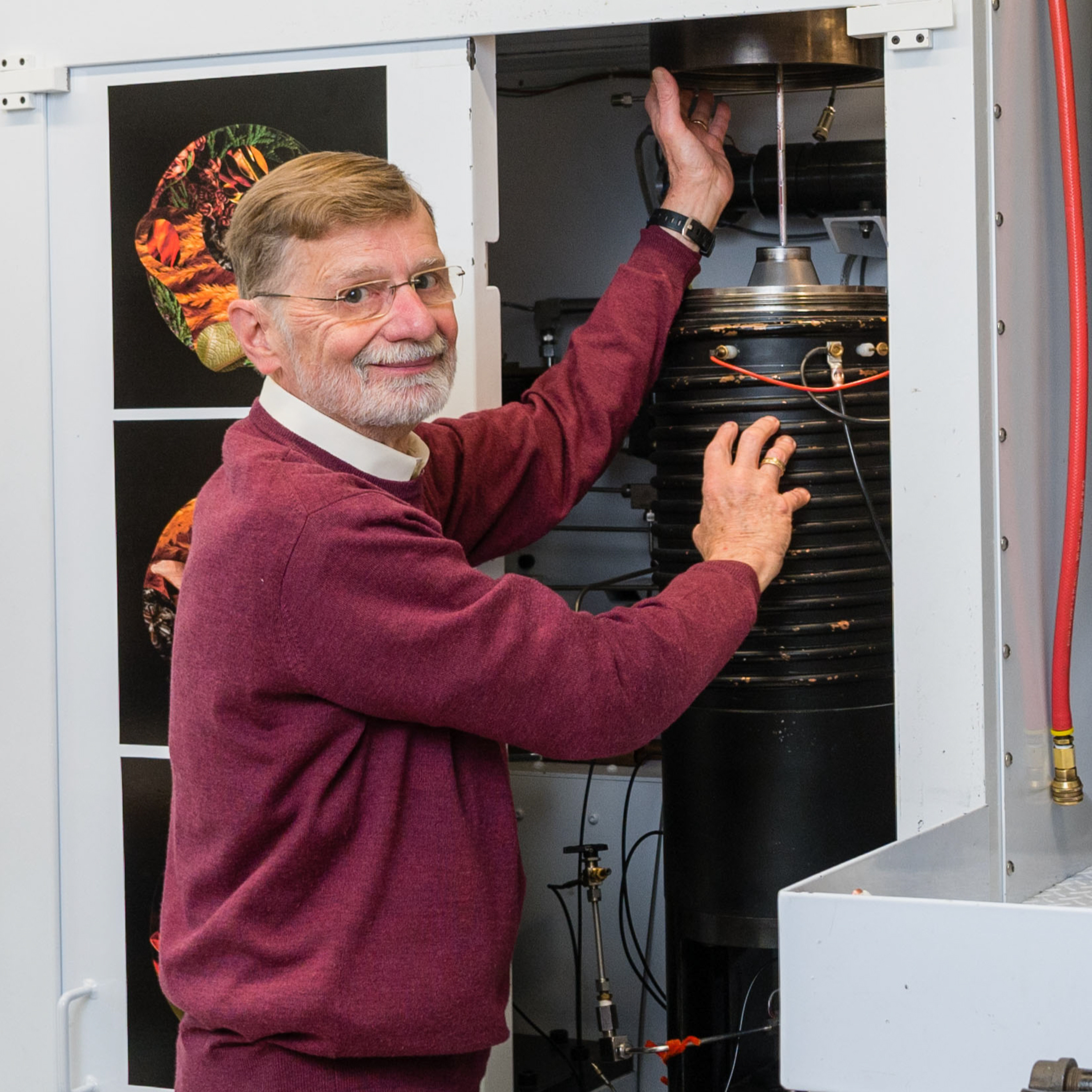 Geology BitesDavid Kohlstedt on Simulating the Mantle in the LabThe Earth’s tectonic plates float on top of the ductile portion of the Earth’s mantle called the asthenosphere. The properties of the asthenosphere, in particular its viscosity, are thought to play a key role in determining how plates move, subduct, and how melt is produced and accumulates. We would like to know what the viscosity of the the asthenosphere is, and how it depends on temperature, pressure, and the proportion of melt and water it contains. Few mantle rocks ever reach the Earth’s surface, and those that do are altered by weathering. So, as he explains in the...2024-02-0932 min
Geology BitesDavid Kohlstedt on Simulating the Mantle in the LabThe Earth’s tectonic plates float on top of the ductile portion of the Earth’s mantle called the asthenosphere. The properties of the asthenosphere, in particular its viscosity, are thought to play a key role in determining how plates move, subduct, and how melt is produced and accumulates. We would like to know what the viscosity of the the asthenosphere is, and how it depends on temperature, pressure, and the proportion of melt and water it contains. Few mantle rocks ever reach the Earth’s surface, and those that do are altered by weathering. So, as he explains in the...2024-02-0932 min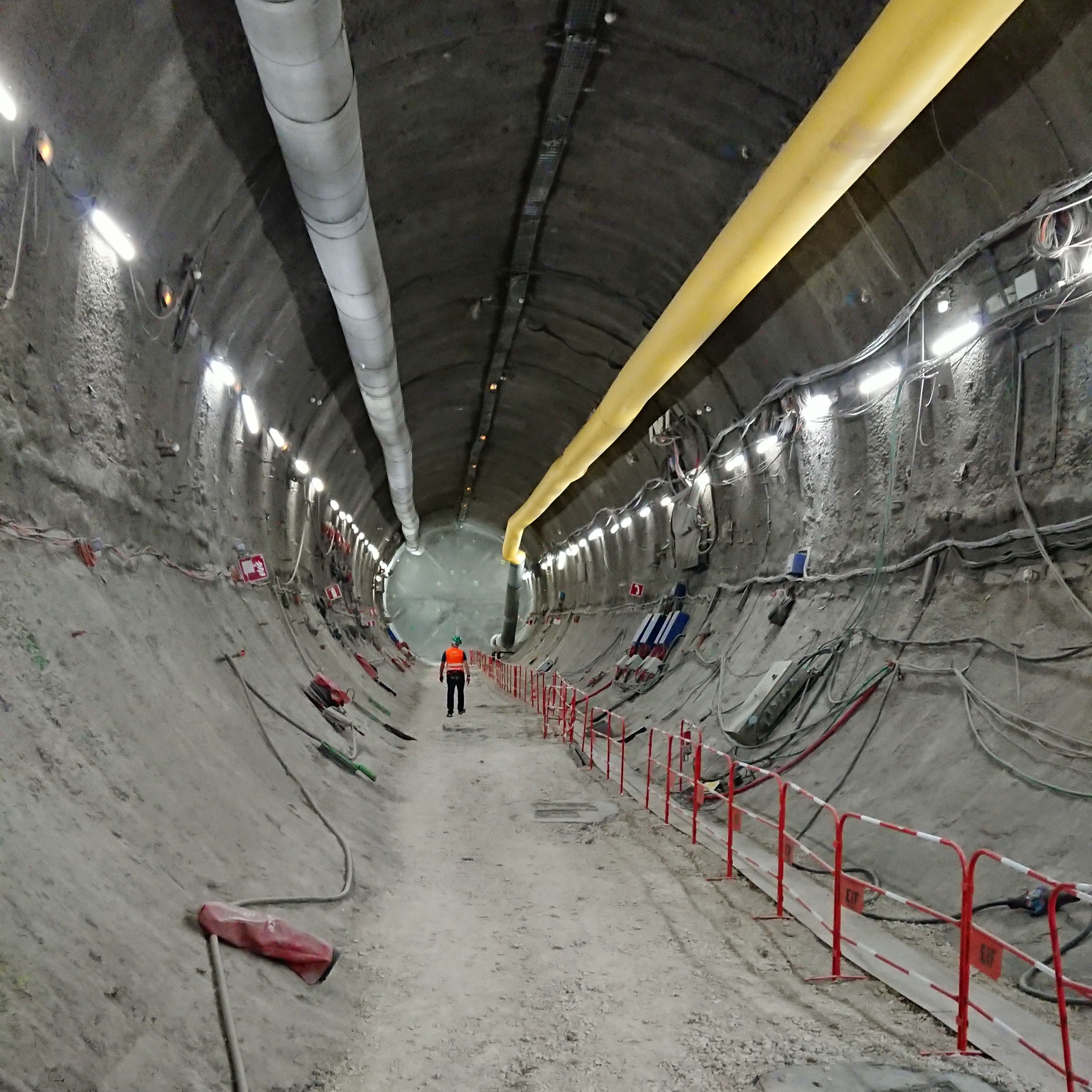 Geology BitesClaire Corkhill on Geological Radioactive Waste DisposalIn many countries, nuclear power is a significant part of the energy mix being planned as part of the drive to achieve net-zero greenhouse-gas emissions. This means that we will be producing a lot more radioactive waste, some of it with half-lives that approach geological timescales, which are orders of magnitude greater than timescales associated with human civilizations. In the podcast, Claire Corkhill discusses the geology such storage sites require, some new materials that can confine radioactive isotopes over extremely long timescales, and the kind of hazards, including human, we need to guard against.
Claire Corkhill is...2024-01-0731 min
Geology BitesClaire Corkhill on Geological Radioactive Waste DisposalIn many countries, nuclear power is a significant part of the energy mix being planned as part of the drive to achieve net-zero greenhouse-gas emissions. This means that we will be producing a lot more radioactive waste, some of it with half-lives that approach geological timescales, which are orders of magnitude greater than timescales associated with human civilizations. In the podcast, Claire Corkhill discusses the geology such storage sites require, some new materials that can confine radioactive isotopes over extremely long timescales, and the kind of hazards, including human, we need to guard against.
Claire Corkhill is...2024-01-0731 min Geology BitesMahesh Anand on What Human Return to the Moon Means for Lunar GeologyWe have learned a great deal about the geology of the Moon from remote sensing instruments aboard lunar orbiters, from robot landers, from the Apollo landings, and from samples returned to the Earth by Apollo and robot landings. But in 2025, when NASA plans to land humans on the Moon for the first time since 1972, a new phase of lunar exploration is expected to begin. What will this mean for our understanding of the origin, evolution, and present structure of the Moon? A lot, according to Mahesh Anand. For example, as he explains in the podcast, satellite imagery suggests that...2023-12-2232 min
Geology BitesMahesh Anand on What Human Return to the Moon Means for Lunar GeologyWe have learned a great deal about the geology of the Moon from remote sensing instruments aboard lunar orbiters, from robot landers, from the Apollo landings, and from samples returned to the Earth by Apollo and robot landings. But in 2025, when NASA plans to land humans on the Moon for the first time since 1972, a new phase of lunar exploration is expected to begin. What will this mean for our understanding of the origin, evolution, and present structure of the Moon? A lot, according to Mahesh Anand. For example, as he explains in the podcast, satellite imagery suggests that...2023-12-2232 min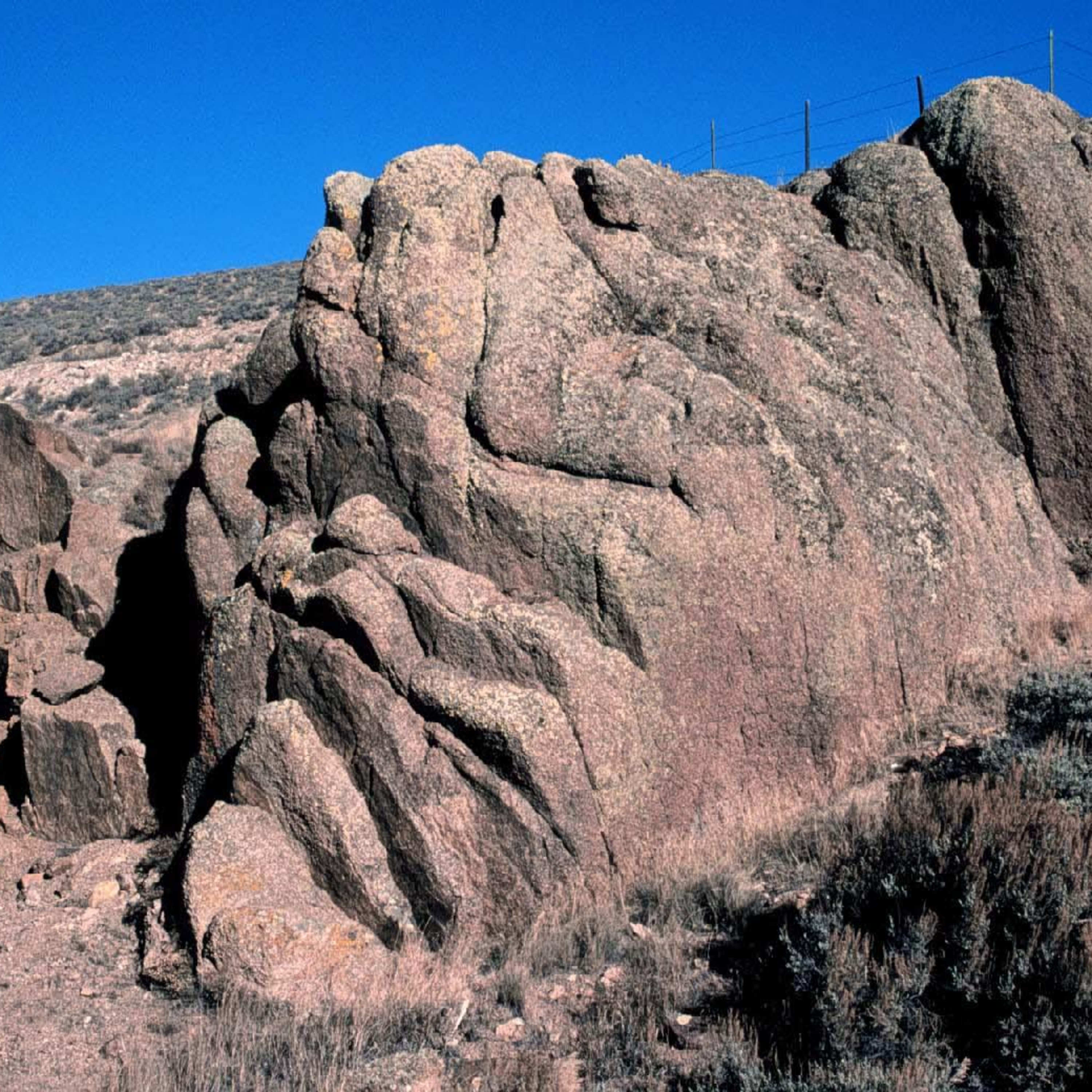 Geology BitesSusan Brantley on Earth's Geological ThermostatAt the core of Earth’s geological thermostat is the dissolution of silicate minerals in the presence of atmospheric carbon dioxide and liquid water. But at large scales, the effectiveness and temperature sensitivity of this reaction depends on geomorphological, climatic, and tectonic factors that vary greatly from place to place. As described in the podcast, to predict watershed-scale or global temperature sensitivity, Susan Brantley characterizes these factors using the standard formula for the temperature dependence of chemical reaction rates using an empirically-determined activation energy for each process. Overall, her results suggest a doubling of the weathering rate for each 10-d...2023-12-1027 min
Geology BitesSusan Brantley on Earth's Geological ThermostatAt the core of Earth’s geological thermostat is the dissolution of silicate minerals in the presence of atmospheric carbon dioxide and liquid water. But at large scales, the effectiveness and temperature sensitivity of this reaction depends on geomorphological, climatic, and tectonic factors that vary greatly from place to place. As described in the podcast, to predict watershed-scale or global temperature sensitivity, Susan Brantley characterizes these factors using the standard formula for the temperature dependence of chemical reaction rates using an empirically-determined activation energy for each process. Overall, her results suggest a doubling of the weathering rate for each 10-d...2023-12-1027 min Geology BitesClark Johnson on the Banded Iron FormationsBanded Iron Formations (BIFs) are a visually striking group of sedimentary rocks that are iron rich and almost exclusively deposited in the Precambrian. Their existence points to a major marine iron cycle that does not operate today. Several theories have been proposed to explain how the BIFs formed. While they all involve the precipitation of ferric (Fe3+) iron hydroxides from the seawater via oxidation of dissolved ferrous (Fe2+) iron that was abundant when the oceans contained very low levels of free oxygen, they disagree as to how this oxidation occurred. In the podcast, Clark Johnson describes how oxidation could...2023-11-1228 min
Geology BitesClark Johnson on the Banded Iron FormationsBanded Iron Formations (BIFs) are a visually striking group of sedimentary rocks that are iron rich and almost exclusively deposited in the Precambrian. Their existence points to a major marine iron cycle that does not operate today. Several theories have been proposed to explain how the BIFs formed. While they all involve the precipitation of ferric (Fe3+) iron hydroxides from the seawater via oxidation of dissolved ferrous (Fe2+) iron that was abundant when the oceans contained very low levels of free oxygen, they disagree as to how this oxidation occurred. In the podcast, Clark Johnson describes how oxidation could...2023-11-1228 min Geology BitesCatherine Mottram on Dating Rock DeformationThe geological history of most regions is shaped by a whole range of processes that occur at temperatures ranging from above 800°C to as low as 100°C. The timing of events occurring over a particular temperature range can be recorded by a mineral which crystallizes over that range. The mineral calcite is suitable for recording low-temperature processes such as fossilization, sedimentation, and fluid flow, and it is especially useful as it is virtually ubiquitous. But using uranium-lead radiometric dating in calcite is very challenging as it often contains very little uranium and the ragiogenically-produced lead isotopes can be swamped by...2023-10-1936 min
Geology BitesCatherine Mottram on Dating Rock DeformationThe geological history of most regions is shaped by a whole range of processes that occur at temperatures ranging from above 800°C to as low as 100°C. The timing of events occurring over a particular temperature range can be recorded by a mineral which crystallizes over that range. The mineral calcite is suitable for recording low-temperature processes such as fossilization, sedimentation, and fluid flow, and it is especially useful as it is virtually ubiquitous. But using uranium-lead radiometric dating in calcite is very challenging as it often contains very little uranium and the ragiogenically-produced lead isotopes can be swamped by...2023-10-1936 min Geology BitesMartin Van Kranendonk on the Earliest Life on EarthIn this episode, Martin Van Kranendonk lays out a convincing case for life on Earth going back to at least 3.48 billion years ago.
To find evidence for very ancient life, we need to look at rocks that have been largely undisturbed over billions of years of Earth history. Such rocks have been found in the Pilbara region of northwest Australia. As explained in the podcast, the 3.48-billion-year-old (Ga) rocks of the Pilbara's Dresser Formation contain exceptionally well-preserved features that show unmistakeable physical and chemical signatures of life. While older 3.7 Ga rocks in west Greenland...2023-09-1233 min
Geology BitesMartin Van Kranendonk on the Earliest Life on EarthIn this episode, Martin Van Kranendonk lays out a convincing case for life on Earth going back to at least 3.48 billion years ago.
To find evidence for very ancient life, we need to look at rocks that have been largely undisturbed over billions of years of Earth history. Such rocks have been found in the Pilbara region of northwest Australia. As explained in the podcast, the 3.48-billion-year-old (Ga) rocks of the Pilbara's Dresser Formation contain exceptionally well-preserved features that show unmistakeable physical and chemical signatures of life. While older 3.7 Ga rocks in west Greenland...2023-09-1233 min Geology BitesRob Butler on the Origin of the AlpsThe Alps are the most intensively studied of all mountain chains, being readily accessed from the geological research centers of Europe. But despite this, there remains considerable uncertainty as to how they formed, especially in the Eocene (about 40 million years ago) when the events that led directly to Alpine mountain-building started. In the podcast, Rob Butler explains how much of this uncertainty stems from our fragmentary knowledge of the locations and structures of sedimentary basins and small continental blocks that lay between Europe and Africa at that time. In his research, he combines detailed studies of the sedimentary rocks...2023-08-1730 min
Geology BitesRob Butler on the Origin of the AlpsThe Alps are the most intensively studied of all mountain chains, being readily accessed from the geological research centers of Europe. But despite this, there remains considerable uncertainty as to how they formed, especially in the Eocene (about 40 million years ago) when the events that led directly to Alpine mountain-building started. In the podcast, Rob Butler explains how much of this uncertainty stems from our fragmentary knowledge of the locations and structures of sedimentary basins and small continental blocks that lay between Europe and Africa at that time. In his research, he combines detailed studies of the sedimentary rocks...2023-08-1730 min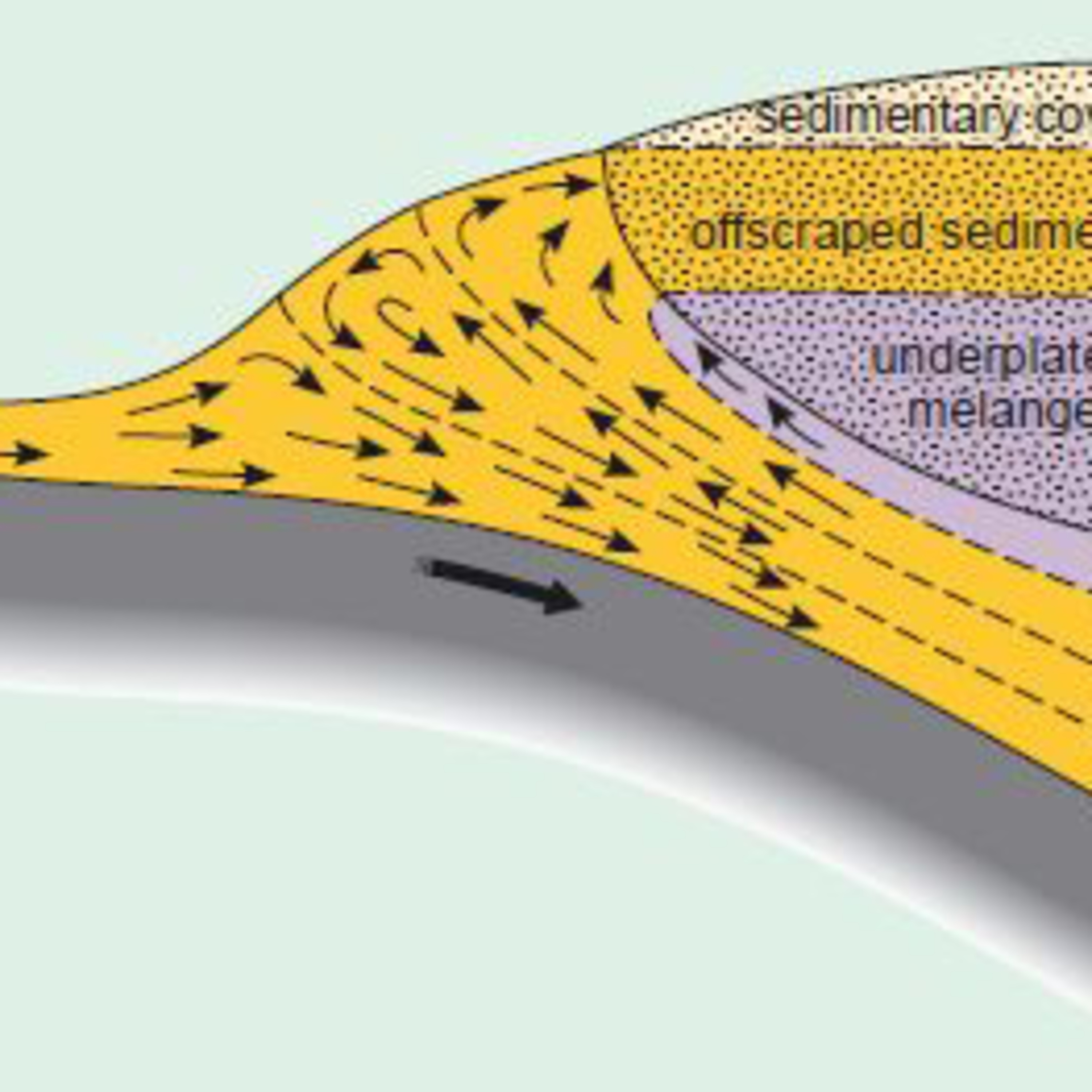 Geology BitesJohn Wakabayashi on the Franciscan ComplexThe Franciscan Complex is a large accretionary prism that has been accreted onto the western margin of the North American continent. Unlike most such prisms, which are submarine, it is exposed on land, making it a magnet for researchers such as John Wakabayashi. In the podcast, he describes this remarkable complex and explains the mechanisms that may have operated over its 150-million-year history.
John Wakabayashi is a Professor in the Department of Earth and Environmental Sciences at California State University, Fresno. He has devoted much of his 40-year research career to the Franciscan Complex.
2023-07-0332 min
Geology BitesJohn Wakabayashi on the Franciscan ComplexThe Franciscan Complex is a large accretionary prism that has been accreted onto the western margin of the North American continent. Unlike most such prisms, which are submarine, it is exposed on land, making it a magnet for researchers such as John Wakabayashi. In the podcast, he describes this remarkable complex and explains the mechanisms that may have operated over its 150-million-year history.
John Wakabayashi is a Professor in the Department of Earth and Environmental Sciences at California State University, Fresno. He has devoted much of his 40-year research career to the Franciscan Complex.
2023-07-0332 min Geology BitesBruce Levell on Bias in the Sedimentary RecordHow can we tell if the sedimentary record is good enough to make solid inferences about the geological past? After all, it can be difficult, or even impossible, to infer what is missing, or indeed whether anything is missing at all.
As he explains in the podcast, Bruce Levell tackles this question by combining fieldwork with systematic analysis based on what we know about contemporary deposition and erosion. Armed with an understanding of preservational bias, he questions the confidence with which some widely held interpretations of the sedimentary record have been made. For example, by analyzing sequences...2023-06-2033 min
Geology BitesBruce Levell on Bias in the Sedimentary RecordHow can we tell if the sedimentary record is good enough to make solid inferences about the geological past? After all, it can be difficult, or even impossible, to infer what is missing, or indeed whether anything is missing at all.
As he explains in the podcast, Bruce Levell tackles this question by combining fieldwork with systematic analysis based on what we know about contemporary deposition and erosion. Armed with an understanding of preservational bias, he questions the confidence with which some widely held interpretations of the sedimentary record have been made. For example, by analyzing sequences...2023-06-2033 min Geology BitesSujoy Mukhopadhyay on Probing the Hadean World with Noble GasesIn a recent episode, Nadja Drabon spoke about newly discovered zircon crystals that formed during the late Hadean and early Archean, when the Earth was between 500 million and a billion years old. The zircons revealed information about processes occurring in the Earth’s nascent crust, casting light on when and how modern-day plate tectonics may have started. In this episode, we talk about a very different source of information about the early Earth, namely the abundances of noble gases occurring within present-day basalts. It turns out that these can probe the Earth’s mantle and atmosphere even further back in time...2023-04-2133 min
Geology BitesSujoy Mukhopadhyay on Probing the Hadean World with Noble GasesIn a recent episode, Nadja Drabon spoke about newly discovered zircon crystals that formed during the late Hadean and early Archean, when the Earth was between 500 million and a billion years old. The zircons revealed information about processes occurring in the Earth’s nascent crust, casting light on when and how modern-day plate tectonics may have started. In this episode, we talk about a very different source of information about the early Earth, namely the abundances of noble gases occurring within present-day basalts. It turns out that these can probe the Earth’s mantle and atmosphere even further back in time...2023-04-2133 min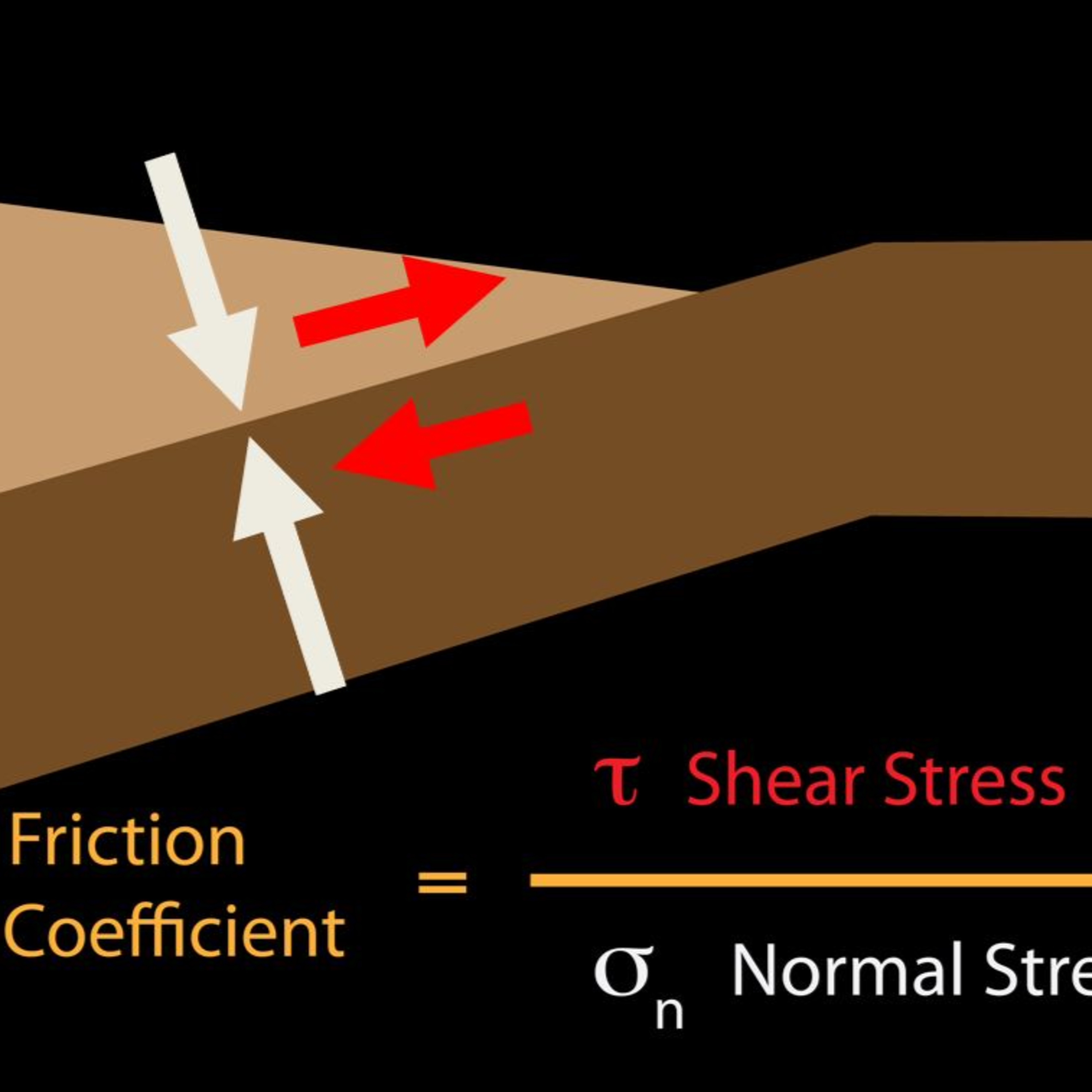 Geology BitesPatrick Fulton on the 2011 Tōhoku EarthquakeIn 2011, a massive earthquake struck off the eastern coast of Japan. The destructive power of the earthquake was amplified by a giant tsunami that swept ashore, killing over 15,000 people. A major cause of the tsunami was the 50-m slip along the plate boundary fault between the subducting Pacific plate and the overriding North American plate. Patrick Fulton and his team set out to find out why there was so much movement along the fault by installing a temperature observatory in a borehole drilled right through the fault zone.
Patrick Fulton uses observation, quantitative analysis...2023-03-2330 min
Geology BitesPatrick Fulton on the 2011 Tōhoku EarthquakeIn 2011, a massive earthquake struck off the eastern coast of Japan. The destructive power of the earthquake was amplified by a giant tsunami that swept ashore, killing over 15,000 people. A major cause of the tsunami was the 50-m slip along the plate boundary fault between the subducting Pacific plate and the overriding North American plate. Patrick Fulton and his team set out to find out why there was so much movement along the fault by installing a temperature observatory in a borehole drilled right through the fault zone.
Patrick Fulton uses observation, quantitative analysis...2023-03-2330 min Geology BitesRomain Jolivet on the 2023 Turkey-Syria EarthquakesRomain Jolivet studies active faults and the relative motion of tectonic plates. His research focuses on the relationship between slow, aseismic slip that occurs “silently” between earthquakes and the rapid slip accompanying earthquakes. As he describes in the podcast, he uses interferometric synthetic aperture radar (InSAR) images from radar satellites to examine surface deformation over wide areas at meter-scale resolution. InSAR images of the 2023 Turkey-Syria earthquakes reveal complicated slip patterns occurring on well-recognized plate boundary faults as well as on hitherto ignored faults.
Romain Jolivet is a Professor of Geoscience at the École normale supérieure in Paris.2023-03-0229 min
Geology BitesRomain Jolivet on the 2023 Turkey-Syria EarthquakesRomain Jolivet studies active faults and the relative motion of tectonic plates. His research focuses on the relationship between slow, aseismic slip that occurs “silently” between earthquakes and the rapid slip accompanying earthquakes. As he describes in the podcast, he uses interferometric synthetic aperture radar (InSAR) images from radar satellites to examine surface deformation over wide areas at meter-scale resolution. InSAR images of the 2023 Turkey-Syria earthquakes reveal complicated slip patterns occurring on well-recognized plate boundary faults as well as on hitherto ignored faults.
Romain Jolivet is a Professor of Geoscience at the École normale supérieure in Paris.2023-03-0229 min Geology BitesDan Rothman on Thresholds of Catastrophe in the Earth SystemThe geological record shows that the Earth’s carbon cycle suffered over 30 major disruptions during the Phanerozoic. Some of the biggest ones were accompanied by mass extinctions. Dan Rothman analyzed these disruptions to find a pattern governing their magnitude and duration. As he explains in the podcast, this pattern is suggestive of a non-linear dynamical system that, once excited, undergoes a large excursion before returning to where it was. Could we be exciting such a disruption now?
He shows that the mass of anthropogenic carbon emissions forecast by the end of the century is about the same as the...2023-02-1037 min
Geology BitesDan Rothman on Thresholds of Catastrophe in the Earth SystemThe geological record shows that the Earth’s carbon cycle suffered over 30 major disruptions during the Phanerozoic. Some of the biggest ones were accompanied by mass extinctions. Dan Rothman analyzed these disruptions to find a pattern governing their magnitude and duration. As he explains in the podcast, this pattern is suggestive of a non-linear dynamical system that, once excited, undergoes a large excursion before returning to where it was. Could we be exciting such a disruption now?
He shows that the mass of anthropogenic carbon emissions forecast by the end of the century is about the same as the...2023-02-1037 min Geology BitesNadja Drabon on a New Lens into the Hadean EonVanishingly few traces of the early Earth are known, so when a new source of zircon crystals of Hadean age is discovered, it makes a big difference to what we can infer about that eon. In the podcast, Nadja Drabon describes how she analyzed the new zircons she and her colleagues discovered and what they reveal about the Earth’s crust between about 4 and 3.6 billion years ago.
Nadja Drabon is Assistant Professor of Earth and Planetary Sciences at Harvard University.
For podcast illustrations and more about Geology Bites, go to geologybites.com.2023-01-0226 min
Geology BitesNadja Drabon on a New Lens into the Hadean EonVanishingly few traces of the early Earth are known, so when a new source of zircon crystals of Hadean age is discovered, it makes a big difference to what we can infer about that eon. In the podcast, Nadja Drabon describes how she analyzed the new zircons she and her colleagues discovered and what they reveal about the Earth’s crust between about 4 and 3.6 billion years ago.
Nadja Drabon is Assistant Professor of Earth and Planetary Sciences at Harvard University.
For podcast illustrations and more about Geology Bites, go to geologybites.com.2023-01-0226 min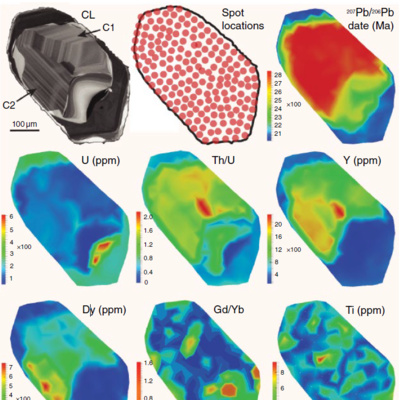 Geology BitesJohn Cottle on the Petrochronology RevolutionOver the course of Earth history, many parts of the crust have undergone multiple episodes of metamorphism. Modern methods of dating and measuring trace-element abundances are now able to tease out the timing and conditions of the individual episodes. But new techniques were needed before these methods could be scaled up to unravel regional tectonic events such as the formation of mountain belts and subduction zones and continental rifting. In the podcast, John Cottle describes one such technique that he and his group developed and that ushered in a revolution in the study of metamorphic rocks. He discusses how the t...2022-12-0329 min
Geology BitesJohn Cottle on the Petrochronology RevolutionOver the course of Earth history, many parts of the crust have undergone multiple episodes of metamorphism. Modern methods of dating and measuring trace-element abundances are now able to tease out the timing and conditions of the individual episodes. But new techniques were needed before these methods could be scaled up to unravel regional tectonic events such as the formation of mountain belts and subduction zones and continental rifting. In the podcast, John Cottle describes one such technique that he and his group developed and that ushered in a revolution in the study of metamorphic rocks. He discusses how the t...2022-12-0329 min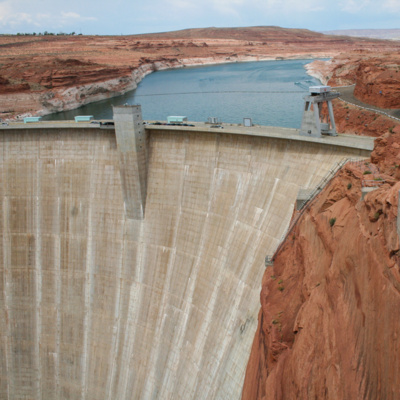 Geology BitesMartin Gibling on Rivers in the Geological Record - Part 2This episode is the second of two of my conversation with Martin Gibling. In the first episode, we discuss fluvial deposits in the geological record and we trace the effect that the break-up of Pangea around 200 million years ago had on river systems. In this episode, we address the history of the rivers of Europe and the Americas, as well as the impact of the recent ice ages on today’s rivers. We end by considering how humans have changed rivers and their deposits throughout mankind’s history. Martin Gibling has spent a lifetime studying rivers and river sediments around...2022-11-1025 min
Geology BitesMartin Gibling on Rivers in the Geological Record - Part 2This episode is the second of two of my conversation with Martin Gibling. In the first episode, we discuss fluvial deposits in the geological record and we trace the effect that the break-up of Pangea around 200 million years ago had on river systems. In this episode, we address the history of the rivers of Europe and the Americas, as well as the impact of the recent ice ages on today’s rivers. We end by considering how humans have changed rivers and their deposits throughout mankind’s history. Martin Gibling has spent a lifetime studying rivers and river sediments around...2022-11-1025 min Geology BitesMartin Gibling on Rivers in the Geological Record - Part 1Rivers can seem very ephemeral, often changing course or drying up entirely. Yet some rivers have persisted for tens or even hundreds of millions of years, even testifying to the breakup of Pangea, the most recent supercontinent, about 200 million years ago. On the one hand, their courses may be determined by tectonic processes such as the formation of mountain belts. And on the other, they themselves can affect tectonic processes by creating continent-scale features, such as giant submarine fans. Martin Gibling has spent a lifetime studying rivers and river sediments around the world. He is Emeritus Professor in the Depa...2022-11-1029 min
Geology BitesMartin Gibling on Rivers in the Geological Record - Part 1Rivers can seem very ephemeral, often changing course or drying up entirely. Yet some rivers have persisted for tens or even hundreds of millions of years, even testifying to the breakup of Pangea, the most recent supercontinent, about 200 million years ago. On the one hand, their courses may be determined by tectonic processes such as the formation of mountain belts. And on the other, they themselves can affect tectonic processes by creating continent-scale features, such as giant submarine fans. Martin Gibling has spent a lifetime studying rivers and river sediments around the world. He is Emeritus Professor in the Depa...2022-11-1029 min Geology BitesAnna Fleming on the Experience of Rock ClimbingThis episode is a bit of a departure from the objective approach to geology of past episodes in that here we address the subjective nature of various rocks as experienced by a rock climber with a literary bent.
A rock climber’s very survival can depend on the properties of a rock encountered along a climbing route. This engenders a uniquely intense relationship between climber and rock. Anna Fleming has written perceptively about this intense relationship gained from climbing in Britain and the Mediterranean. In a book entitled Time on Rock, she writes about her experiences climbing grits...2022-10-1018 min
Geology BitesAnna Fleming on the Experience of Rock ClimbingThis episode is a bit of a departure from the objective approach to geology of past episodes in that here we address the subjective nature of various rocks as experienced by a rock climber with a literary bent.
A rock climber’s very survival can depend on the properties of a rock encountered along a climbing route. This engenders a uniquely intense relationship between climber and rock. Anna Fleming has written perceptively about this intense relationship gained from climbing in Britain and the Mediterranean. In a book entitled Time on Rock, she writes about her experiences climbing grits...2022-10-1018 min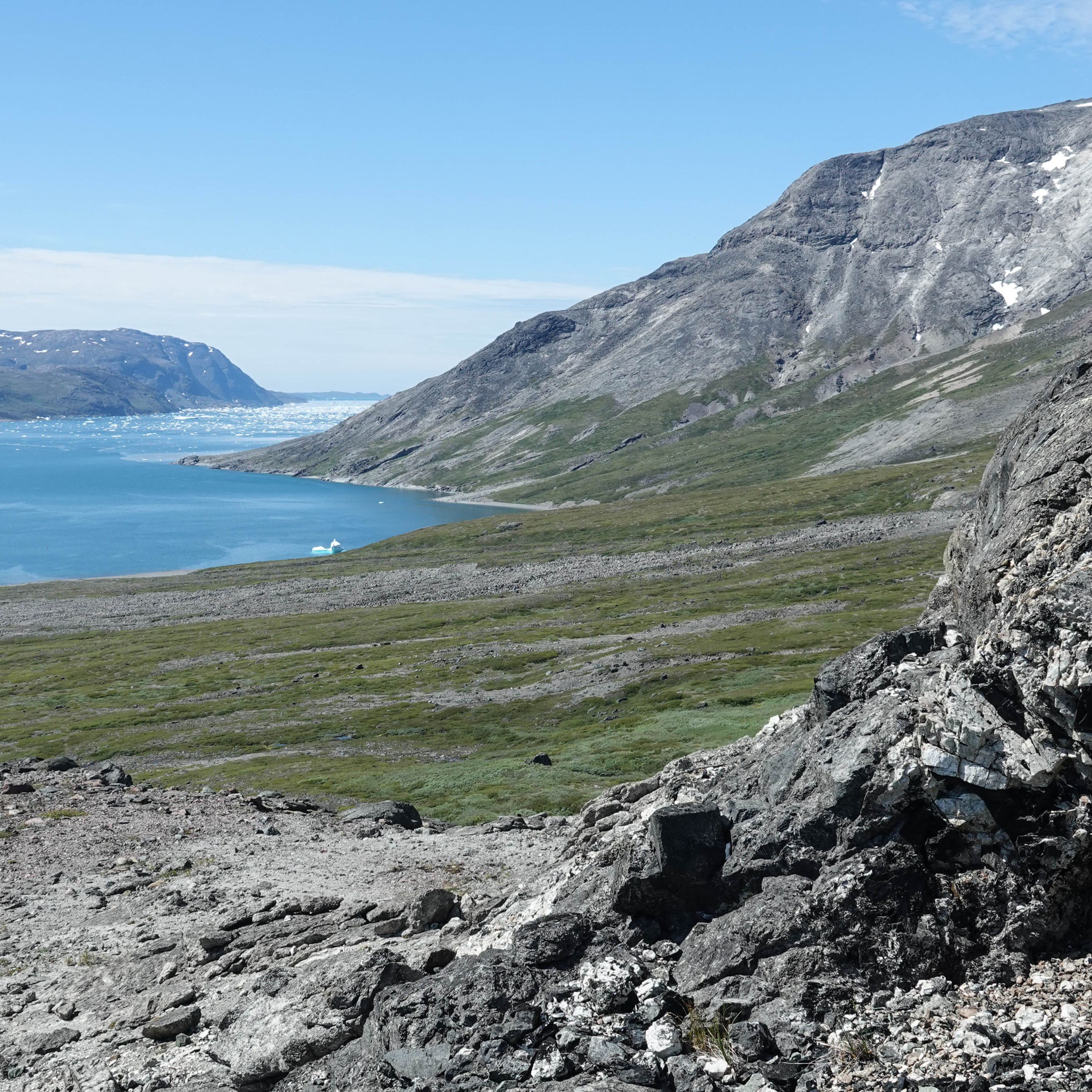 Geology BitesBrian Upton on the Unique Rift Zone of South GreenlandBetween 1.3 and 1.1 billion years ago, magma from the Earth's mantle intruded into a continent during the assembly of the supercontinent called Nuna. Through good fortune, the dykes and central complexes that resulted have been preserved in near-pristine condition in what is now the south of Greenland. The dykes are extraordinarily thick, and the central complexes contain an order of magnitude more exotic minerals than otherwise similar complexes around the world. In the podcast, Brian Upton describes what he found during over 20 seasons of field work there and explains how extreme fractionation of the magma might be responsible for the...2022-09-0326 min
Geology BitesBrian Upton on the Unique Rift Zone of South GreenlandBetween 1.3 and 1.1 billion years ago, magma from the Earth's mantle intruded into a continent during the assembly of the supercontinent called Nuna. Through good fortune, the dykes and central complexes that resulted have been preserved in near-pristine condition in what is now the south of Greenland. The dykes are extraordinarily thick, and the central complexes contain an order of magnitude more exotic minerals than otherwise similar complexes around the world. In the podcast, Brian Upton describes what he found during over 20 seasons of field work there and explains how extreme fractionation of the magma might be responsible for the...2022-09-0326 min Geology BitesGeoff Abers on Subduction Zones and the Geological Water CycleSubduction zones are places where a slab of oceanic lithosphere plunges into the mantle below. The slab consists of the sediments on top, crustal rocks in the middle, and the lithospheric mantle on the bottom, all plunging down together as a kind of sandwich. In each of these layers is an ingredient that plays a key role in shaping the evolution of the Earth over geological time – and that is water.
Geoff Abers has conducted extensive research on water in subduction zones. In this episode, he explains how he uses seismic observations to map the distribution of water...2022-08-1027 min
Geology BitesGeoff Abers on Subduction Zones and the Geological Water CycleSubduction zones are places where a slab of oceanic lithosphere plunges into the mantle below. The slab consists of the sediments on top, crustal rocks in the middle, and the lithospheric mantle on the bottom, all plunging down together as a kind of sandwich. In each of these layers is an ingredient that plays a key role in shaping the evolution of the Earth over geological time – and that is water.
Geoff Abers has conducted extensive research on water in subduction zones. In this episode, he explains how he uses seismic observations to map the distribution of water...2022-08-1027 min Geology BitesMaria McNamara on Seeing the Ancient World in ColorPopular reconstructions of ancient environments, whether they be in natural history museum dioramas, in movies, or in books, present a world of color. But are those colors just fanciful renderings, perhaps based on the colors we see around us today? Or is there evidence in the fossil record that we can use to determine the actual color of plants and animals that lived in the geological past?
Maria McNamara tries to answer these questions by studying the fossil preservation of soft tissues, such as skin, muscle, and internal organs. She does this by analyzing fossils that come f...2022-06-1730 min
Geology BitesMaria McNamara on Seeing the Ancient World in ColorPopular reconstructions of ancient environments, whether they be in natural history museum dioramas, in movies, or in books, present a world of color. But are those colors just fanciful renderings, perhaps based on the colors we see around us today? Or is there evidence in the fossil record that we can use to determine the actual color of plants and animals that lived in the geological past?
Maria McNamara tries to answer these questions by studying the fossil preservation of soft tissues, such as skin, muscle, and internal organs. She does this by analyzing fossils that come f...2022-06-1730 min Geology BitesPhil Renforth on Carbon SequestrationFor many years, efforts to limit climate change have focused on curtailing anthropogenic emissions of greenhouse gases. But it is increasingly clear that such curtailment will not, on its own, be able to prevent the damaging effects of global warming. Therefore, more attention is now directed to mitigating climate change by enhancing the removal or sequestration of greenhouse gases from the atmosphere. As a result, our climate change goals are now often specified in terms of when we plan to reach net zero emissions rather than on when we can just reach emission reduction targets.
Phil Renforth is...2022-06-0125 min
Geology BitesPhil Renforth on Carbon SequestrationFor many years, efforts to limit climate change have focused on curtailing anthropogenic emissions of greenhouse gases. But it is increasingly clear that such curtailment will not, on its own, be able to prevent the damaging effects of global warming. Therefore, more attention is now directed to mitigating climate change by enhancing the removal or sequestration of greenhouse gases from the atmosphere. As a result, our climate change goals are now often specified in terms of when we plan to reach net zero emissions rather than on when we can just reach emission reduction targets.
Phil Renforth is...2022-06-0125 min Geology BitesTony Watts on Seamounts and the Strength of the LithosphereWhen plate tectonics was adopted in the 1960s and early '70s, researchers quickly mapped out plate movements. It seemed that plates moved as rigid caps about a pole on the Earth's surface. But since then, a lot of evidence has accumulated suggesting that plates are not, in fact, totally rigid. In fact, we can see them flex in response to stresses that are imposed on them. Such stresses can arise on plate boundaries, such as when two plates collide and one plate flexes down to subduct under the other. For example, we see a flexural bulge in Northern India...2022-05-1228 min
Geology BitesTony Watts on Seamounts and the Strength of the LithosphereWhen plate tectonics was adopted in the 1960s and early '70s, researchers quickly mapped out plate movements. It seemed that plates moved as rigid caps about a pole on the Earth's surface. But since then, a lot of evidence has accumulated suggesting that plates are not, in fact, totally rigid. In fact, we can see them flex in response to stresses that are imposed on them. Such stresses can arise on plate boundaries, such as when two plates collide and one plate flexes down to subduct under the other. For example, we see a flexural bulge in Northern India...2022-05-1228 min Geology BitesNeil Davies on the Greening of the ContinentsLife only emerged from water in the Ordovician. By that time, life had been thriving in oceans and lakes for billions of years. What did the colonization of the land look like, and how did it reshape the Earth’s surface? Neil Davies describes how we can decipher the stratigraphic sedimentary record to address these questions. Perhaps surprisingly, it’s easier to recognize small and fleeting events than to recognize large-scale features such as mountains, valleys, and floodplains. He also describes his remarkable 2018 discovery of the largest known arthropod in Earth history — a 2.6-meter-long millipede.
Neil Davies is a Lectur...2022-04-2533 min
Geology BitesNeil Davies on the Greening of the ContinentsLife only emerged from water in the Ordovician. By that time, life had been thriving in oceans and lakes for billions of years. What did the colonization of the land look like, and how did it reshape the Earth’s surface? Neil Davies describes how we can decipher the stratigraphic sedimentary record to address these questions. Perhaps surprisingly, it’s easier to recognize small and fleeting events than to recognize large-scale features such as mountains, valleys, and floodplains. He also describes his remarkable 2018 discovery of the largest known arthropod in Earth history — a 2.6-meter-long millipede.
Neil Davies is a Lectur...2022-04-2533 min Geology BitesBen Weiss on the Mission to PsycheThe asteroid Psyche is probably the most metal-rich body we have discovered. There are two, quite different, theories as to how it may have formed: Either it formed that way, or it originally had a more typical composition, but its rocky outer portion was blasted off during a major collision. To help determine which is most likely, NASA is sending a space probe there, to be launched on August 1, 2022. And if we can unravel the history of Psyche, we will also learn how other planets may have formed, since both the asteroids and the planets are thought to have bee...2022-04-1330 min
Geology BitesBen Weiss on the Mission to PsycheThe asteroid Psyche is probably the most metal-rich body we have discovered. There are two, quite different, theories as to how it may have formed: Either it formed that way, or it originally had a more typical composition, but its rocky outer portion was blasted off during a major collision. To help determine which is most likely, NASA is sending a space probe there, to be launched on August 1, 2022. And if we can unravel the history of Psyche, we will also learn how other planets may have formed, since both the asteroids and the planets are thought to have bee...2022-04-1330 min Geology BitesRoger Bilham on Himalayan EarthquakesWe hear about earthquakes in the Himalaya, especially when they claim lives and cause damage. And we understand that, broadly speaking, it is the continued northward movement of India ploughing into Tibet that causes these earthquakes. But where exactly do the earthquakes occur, how do they occur, and what determines how much damage they inflict?
Roger Bilham has conducted a detailed study of the historical record of earthquakes in the Himalaya over the past millennium. He tries to reconcile what we’ve observed with our current understanding of the physical mechanisms at play. This in turn helps us...2022-03-2234 min
Geology BitesRoger Bilham on Himalayan EarthquakesWe hear about earthquakes in the Himalaya, especially when they claim lives and cause damage. And we understand that, broadly speaking, it is the continued northward movement of India ploughing into Tibet that causes these earthquakes. But where exactly do the earthquakes occur, how do they occur, and what determines how much damage they inflict?
Roger Bilham has conducted a detailed study of the historical record of earthquakes in the Himalaya over the past millennium. He tries to reconcile what we’ve observed with our current understanding of the physical mechanisms at play. This in turn helps us...2022-03-2234 min And The Next Thing You KnowOn Planets, Poetry, and Patent Law with Oliver Strimpel
And The Next Thing You Know podcast
Episode 014: Oliver Strimpel
Oliver Strimpel in the field. Photo courtesy of Oliver and Harriet Strimpel
In this episode of 2022-03-071h 09
And The Next Thing You KnowOn Planets, Poetry, and Patent Law with Oliver Strimpel
And The Next Thing You Know podcast
Episode 014: Oliver Strimpel
Oliver Strimpel in the field. Photo courtesy of Oliver and Harriet Strimpel
In this episode of 2022-03-071h 09 Geology BitesSusannah Porter on Tiny Vampires in Ancient SeasThe fossil record of complex life goes back far beyond the Cambrian explosion, to as far back as 1,600 million years ago in the late Paleoproterozoic with the first appearance of eukaryotes. But these creatures only started to diversify much later, around 750 million years ago. What enabled this evolutionary change has been a puzzle, but one idea is that it reflects the appearance of microscopic predators. In the podcast, Susannah Porter tells us how she discovered incontrovertible signs of predation in vase-shaped microfossils dating from this period.
Susannah Porter is a professor in the Department of Earth Sciences at...2022-03-0134 min
Geology BitesSusannah Porter on Tiny Vampires in Ancient SeasThe fossil record of complex life goes back far beyond the Cambrian explosion, to as far back as 1,600 million years ago in the late Paleoproterozoic with the first appearance of eukaryotes. But these creatures only started to diversify much later, around 750 million years ago. What enabled this evolutionary change has been a puzzle, but one idea is that it reflects the appearance of microscopic predators. In the podcast, Susannah Porter tells us how she discovered incontrovertible signs of predation in vase-shaped microfossils dating from this period.
Susannah Porter is a professor in the Department of Earth Sciences at...2022-03-0134 min Geology BitesAna Ferreira on Seeing Flows in the MantleDoes the pull of a subducting slab drive plate motions? Or is it the upwellings of convection cells in the mantle? We now have a new way to shed light on this question. It's called seismic anisotropy, which is the spreading out of seismic waves according to their direction of polarization. This happens when the mantle through which the waves travel has crystals which are preferentially aligned, and that occurs when there is deformation or flow going on. So we can work backwards to use the observed dispersion of seismic wave arrival times to infer flow patterns in the mantl...2022-02-2122 min
Geology BitesAna Ferreira on Seeing Flows in the MantleDoes the pull of a subducting slab drive plate motions? Or is it the upwellings of convection cells in the mantle? We now have a new way to shed light on this question. It's called seismic anisotropy, which is the spreading out of seismic waves according to their direction of polarization. This happens when the mantle through which the waves travel has crystals which are preferentially aligned, and that occurs when there is deformation or flow going on. So we can work backwards to use the observed dispersion of seismic wave arrival times to infer flow patterns in the mantl...2022-02-2122 min Geology BitesPhil Gibbard on the AnthropoceneThere’s a lot of debate about the idea that the global changes brought about by humans define a new geological epoch, dubbed the Anthropocene. Should such an epoch be added to the official geological time scale? If so, what aspect or aspects of anthropogenic change should be used, and exactly where do we place the golden spike that will define the base of the Anthropocene?
Such questions come under the purview of the International Commission on Stratigraphy, whose current secretary general is our guest in this episode. Phil Gibbard is Emeritus Professor of Quaternary Palaeoenvironments at the...2022-02-1227 min
Geology BitesPhil Gibbard on the AnthropoceneThere’s a lot of debate about the idea that the global changes brought about by humans define a new geological epoch, dubbed the Anthropocene. Should such an epoch be added to the official geological time scale? If so, what aspect or aspects of anthropogenic change should be used, and exactly where do we place the golden spike that will define the base of the Anthropocene?
Such questions come under the purview of the International Commission on Stratigraphy, whose current secretary general is our guest in this episode. Phil Gibbard is Emeritus Professor of Quaternary Palaeoenvironments at the...2022-02-1227 min Geology BitesDavid Bercovici on How Plate Subduction StartsSubduction zones are a fundamental aspect of plate tectonics, yet we still don't really understand how subduction initiates. It's a tough problem because as oceanic plates move away from a mid-ocean spreading center and cool, they get stiffer and should become more and more resistant to bending and sinking down into the mantle. But recent work suggests that the clue to this puzzle lies in the physics of grains at the microscale.
David Bercovici is one of the geologists who has pioneered the approach that looks at what happens in the rocks of the oceanic lithosphere on the...2022-02-0530 min
Geology BitesDavid Bercovici on How Plate Subduction StartsSubduction zones are a fundamental aspect of plate tectonics, yet we still don't really understand how subduction initiates. It's a tough problem because as oceanic plates move away from a mid-ocean spreading center and cool, they get stiffer and should become more and more resistant to bending and sinking down into the mantle. But recent work suggests that the clue to this puzzle lies in the physics of grains at the microscale.
David Bercovici is one of the geologists who has pioneered the approach that looks at what happens in the rocks of the oceanic lithosphere on the...2022-02-0530 min Geology BitesBob Hazen on the Evolution of MineralsNew rock types emerge during the history of the Earth. For example, the silica-rich felsic rocks such as granite that characterize continental crust, accumulated during the course of Earth history. Granite only forms in certain specific tectonic settings, such as above subduction zones and when lower crustal rocks melt in mountain belts. But what about the minerals themselves? Have they been around since the Earth formed, or did they too only appear on the scene later as a result of some geological process?
The question of how and when the minerals evolved is a relatively new subject, and...2022-01-2534 min
Geology BitesBob Hazen on the Evolution of MineralsNew rock types emerge during the history of the Earth. For example, the silica-rich felsic rocks such as granite that characterize continental crust, accumulated during the course of Earth history. Granite only forms in certain specific tectonic settings, such as above subduction zones and when lower crustal rocks melt in mountain belts. But what about the minerals themselves? Have they been around since the Earth formed, or did they too only appear on the scene later as a result of some geological process?
The question of how and when the minerals evolved is a relatively new subject, and...2022-01-2534 min Geology BitesMatt Jackson on the Heterogeneity of the MantleMatt Jackson is a Professor of Earth Science at the University of California, Santa Barbara. He probes the chemical composition of the mantle by analyzing trace elements and isotopes in hot-spot lavas from around the world. In the podcast, he describes the intriguing heterogeneity among the hot-spots of the so-called “hot-spot highway” in the western Pacific. The heterogeneity there, as well as on larger spatial scales is challenging our ideas about the motions of the mantle over the billions of years of Earth history.2022-01-0835 min
Geology BitesMatt Jackson on the Heterogeneity of the MantleMatt Jackson is a Professor of Earth Science at the University of California, Santa Barbara. He probes the chemical composition of the mantle by analyzing trace elements and isotopes in hot-spot lavas from around the world. In the podcast, he describes the intriguing heterogeneity among the hot-spots of the so-called “hot-spot highway” in the western Pacific. The heterogeneity there, as well as on larger spatial scales is challenging our ideas about the motions of the mantle over the billions of years of Earth history.2022-01-0835 min Geology BitesCarmie Garzione on Reconstructing Land Elevation Over Geological TimeThroughout geological history, various points on the Earth’s surface have been lifted up to great elevations and worn down into low, flat-lying regions. Determining surface elevation histories is difficult because rocks that were once on the surface are usually eroded away or buried. Furthermore, most rock-forming processes are not directly affected by elevation. But it turns out that we can overcome these challenges, as Carmie Garzione explains in the podcast.
Carmie Garzione is Dean of the College of Science at the University of Arizona. She has managed to pin down the history of elevation changes by analyzi...2022-01-0131 min
Geology BitesCarmie Garzione on Reconstructing Land Elevation Over Geological TimeThroughout geological history, various points on the Earth’s surface have been lifted up to great elevations and worn down into low, flat-lying regions. Determining surface elevation histories is difficult because rocks that were once on the surface are usually eroded away or buried. Furthermore, most rock-forming processes are not directly affected by elevation. But it turns out that we can overcome these challenges, as Carmie Garzione explains in the podcast.
Carmie Garzione is Dean of the College of Science at the University of Arizona. She has managed to pin down the history of elevation changes by analyzi...2022-01-0131 min Geology BitesChuck DeMets on High-Resolution Plate MotionsThe magnetic stripes frozen into the sea floor as it forms at mid-ocean ridges record the Earth’s magnetic field at the time of formation. Reversals in the Earth’s magnetic field define the edges of these stripes, in effect time-stamping the sea floor position.
Chuck DeMets is Emeritus Professor of Geoscience at the University of Wisconsin, Madison. He studies the magnetic anomalies in seafloor rocks to reconstruct plate motions at a temporal resolution five times better than has been done hitherto. This has revealed unexpected speed-ups and slow-downs in plate motions that provide juicy puzzles for geodyna...2021-12-2534 min
Geology BitesChuck DeMets on High-Resolution Plate MotionsThe magnetic stripes frozen into the sea floor as it forms at mid-ocean ridges record the Earth’s magnetic field at the time of formation. Reversals in the Earth’s magnetic field define the edges of these stripes, in effect time-stamping the sea floor position.
Chuck DeMets is Emeritus Professor of Geoscience at the University of Wisconsin, Madison. He studies the magnetic anomalies in seafloor rocks to reconstruct plate motions at a temporal resolution five times better than has been done hitherto. This has revealed unexpected speed-ups and slow-downs in plate motions that provide juicy puzzles for geodyna...2021-12-2534 min Geology BitesMike Searle on OphioliteAs the name implies, oceanic lithosphere underlies the oceans of the world. Except when they are ophiolites, when oceanic lithosphere is thrust on top of a continental margin. Are ophiolites a special kind of oceanic lithosphere? Or are there peculiar tectonic circumstances that emplace denser oceanic rocks on top of lighter continental ones? Mike Searle addresses these questions, and reveals the sequence of events that created the world's most extensive and best-preserved ophiolite - the Semail ophiolite in Oman.
Mike Searle is Emeritus Professor of Earth Sciences at the University of Oxford and at the Camborne School of Min...2021-12-1828 min
Geology BitesMike Searle on OphioliteAs the name implies, oceanic lithosphere underlies the oceans of the world. Except when they are ophiolites, when oceanic lithosphere is thrust on top of a continental margin. Are ophiolites a special kind of oceanic lithosphere? Or are there peculiar tectonic circumstances that emplace denser oceanic rocks on top of lighter continental ones? Mike Searle addresses these questions, and reveals the sequence of events that created the world's most extensive and best-preserved ophiolite - the Semail ophiolite in Oman.
Mike Searle is Emeritus Professor of Earth Sciences at the University of Oxford and at the Camborne School of Min...2021-12-1828 min Geology BitesMackenzie Day on DunesSome of the most extensive sandstone deposits in the world were deposited by wind. How do such aeolian rocks differ from water or ice-deposited rocks? And what do they reveal about the environments in which they formed? In the podcast she describes the dunes we see in the geological record on Earth, as well as on Mars and on a comet, and explains what we've learned from them.
Mackenzie Day is an Assistant Professor in the Department of Earth, Planetary, & Space Sciences at the University of California Los Angeles. She is an expert in aeolian processes. In the p...2021-12-1124 min
Geology BitesMackenzie Day on DunesSome of the most extensive sandstone deposits in the world were deposited by wind. How do such aeolian rocks differ from water or ice-deposited rocks? And what do they reveal about the environments in which they formed? In the podcast she describes the dunes we see in the geological record on Earth, as well as on Mars and on a comet, and explains what we've learned from them.
Mackenzie Day is an Assistant Professor in the Department of Earth, Planetary, & Space Sciences at the University of California Los Angeles. She is an expert in aeolian processes. In the p...2021-12-1124 min Geology BitesSue Smrekar on the VERITAS Mission to VenusThe best maps we have of Venus were made by Magellan, a space probe that flew in the 1990s. In the summer of 2021, NASA approved a new mapping mission that will produce radically improved maps of the topography, radar reflectivity, and gravity field, and the first ever global map of surface rock type. Sue Smrekar, the mission Principal Investigator, explains why this will revolutionize our understanding of Venus and perhaps also throw light on the early history of Earth when processes analogous to those happening on Venus today may have occurred.
Sue Smrekar is a geophysicist who ha...2021-12-0434 min
Geology BitesSue Smrekar on the VERITAS Mission to VenusThe best maps we have of Venus were made by Magellan, a space probe that flew in the 1990s. In the summer of 2021, NASA approved a new mapping mission that will produce radically improved maps of the topography, radar reflectivity, and gravity field, and the first ever global map of surface rock type. Sue Smrekar, the mission Principal Investigator, explains why this will revolutionize our understanding of Venus and perhaps also throw light on the early history of Earth when processes analogous to those happening on Venus today may have occurred.
Sue Smrekar is a geophysicist who ha...2021-12-0434 min Geology BitesRick Carlson on Probing the Early Solar SystemAlmost all the evidence about the nascent solar system has been erased by processes accompanying the formation of the Sun and the bodies that formed out of the circumsolar disk about 4.6 billion years ago. But some meteorites and the tiny dust grains contained within them have anomalous compositions that can only be understood by invoking a history going back to the giant molecular cloud progenitor of the solar system, and to the stars that ejected the material that formed the cloud. Rick Carlson explains what the anomalies are and how we can use them to learn about what might ha...2021-11-2833 min
Geology BitesRick Carlson on Probing the Early Solar SystemAlmost all the evidence about the nascent solar system has been erased by processes accompanying the formation of the Sun and the bodies that formed out of the circumsolar disk about 4.6 billion years ago. But some meteorites and the tiny dust grains contained within them have anomalous compositions that can only be understood by invoking a history going back to the giant molecular cloud progenitor of the solar system, and to the stars that ejected the material that formed the cloud. Rick Carlson explains what the anomalies are and how we can use them to learn about what might ha...2021-11-2833 min Geology BitesEd Marshall on Iceland's 2021 EruptionAfter months of high earthquake activity, a fissure opened up near the southwestern tip of Iceland on March 19, 2021. Over a period of about seven months, several other fissures opened up, generating lava flows several kilometers long that filled several valleys and created a new 150-meter high mountain, a sort of mini-shield volcano. The eruption has been intensively studied by geologists because it is the first eruption of its kind in Iceland in living memory, and also because it’s extremely accessible – just a short drive from Reykjavik.
Ed Marshall has made dozens of visits to the eruption site...2021-11-1427 min
Geology BitesEd Marshall on Iceland's 2021 EruptionAfter months of high earthquake activity, a fissure opened up near the southwestern tip of Iceland on March 19, 2021. Over a period of about seven months, several other fissures opened up, generating lava flows several kilometers long that filled several valleys and created a new 150-meter high mountain, a sort of mini-shield volcano. The eruption has been intensively studied by geologists because it is the first eruption of its kind in Iceland in living memory, and also because it’s extremely accessible – just a short drive from Reykjavik.
Ed Marshall has made dozens of visits to the eruption site...2021-11-1427 min Geology BitesRichard Fortey on the Trilobite ChronometerLong before radiometric dating appeared on the scene, the geological time scale was defined by the sedimentary record, and particularly by key fossils preserved within them. Throughout the Cambrian, and to a lesser extent until the end-Permian extinction about 300 million years later, trilobite fossils served as some of the most useful of these key fossils. Richard Fortey explains why. Here he is holding a trilobite from the calymene genus.
Richard Fortey is formerly head of arthropod paleontology at the Natural History Museum in London and is visiting professor of paleobiology at Oxford University. He has devoted much of h...2021-11-0725 min
Geology BitesRichard Fortey on the Trilobite ChronometerLong before radiometric dating appeared on the scene, the geological time scale was defined by the sedimentary record, and particularly by key fossils preserved within them. Throughout the Cambrian, and to a lesser extent until the end-Permian extinction about 300 million years later, trilobite fossils served as some of the most useful of these key fossils. Richard Fortey explains why. Here he is holding a trilobite from the calymene genus.
Richard Fortey is formerly head of arthropod paleontology at the Natural History Museum in London and is visiting professor of paleobiology at Oxford University. He has devoted much of h...2021-11-0725 min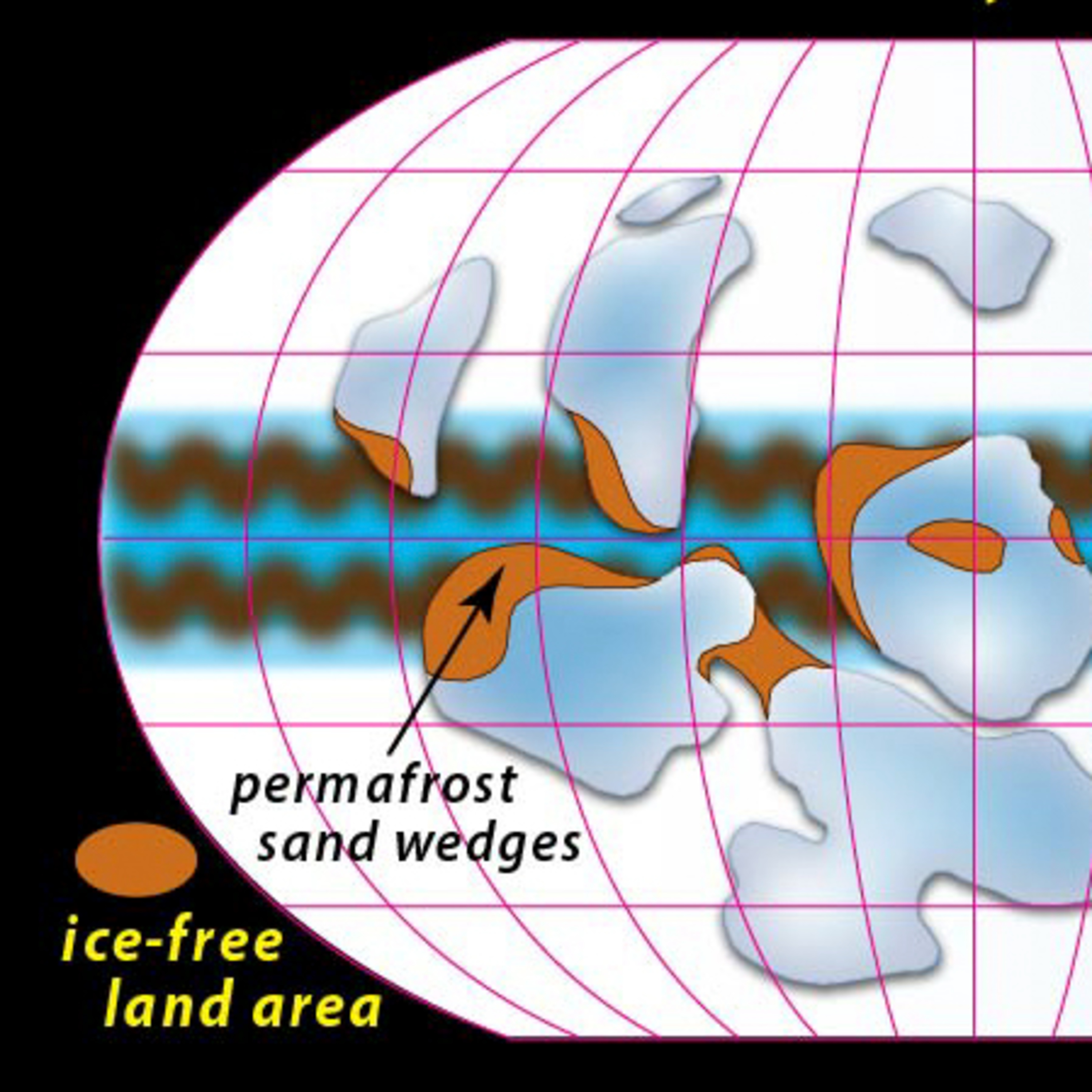 Geology BitesPaul Hoffman on the Snowball Earth HypothesisWe’re all familiar with the idea of ice ages during which the polar ice caps advance to cover significant portions of their respective hemispheres, and then, after a period of tens to hundreds of thousands of years, retreat back to the polar regions. But now we believe that twice during the Earth’s history, the ice advanced all the way to the equator, almost completely blanketing the Earth with a sheet of ice several kilometers thick. This is the Snowball Earth hypothesis. In the podcast Paul Hoffman explains the mechanisms that could have brought about a snowball Earth, and des...2021-11-0132 min
Geology BitesPaul Hoffman on the Snowball Earth HypothesisWe’re all familiar with the idea of ice ages during which the polar ice caps advance to cover significant portions of their respective hemispheres, and then, after a period of tens to hundreds of thousands of years, retreat back to the polar regions. But now we believe that twice during the Earth’s history, the ice advanced all the way to the equator, almost completely blanketing the Earth with a sheet of ice several kilometers thick. This is the Snowball Earth hypothesis. In the podcast Paul Hoffman explains the mechanisms that could have brought about a snowball Earth, and des...2021-11-0132 min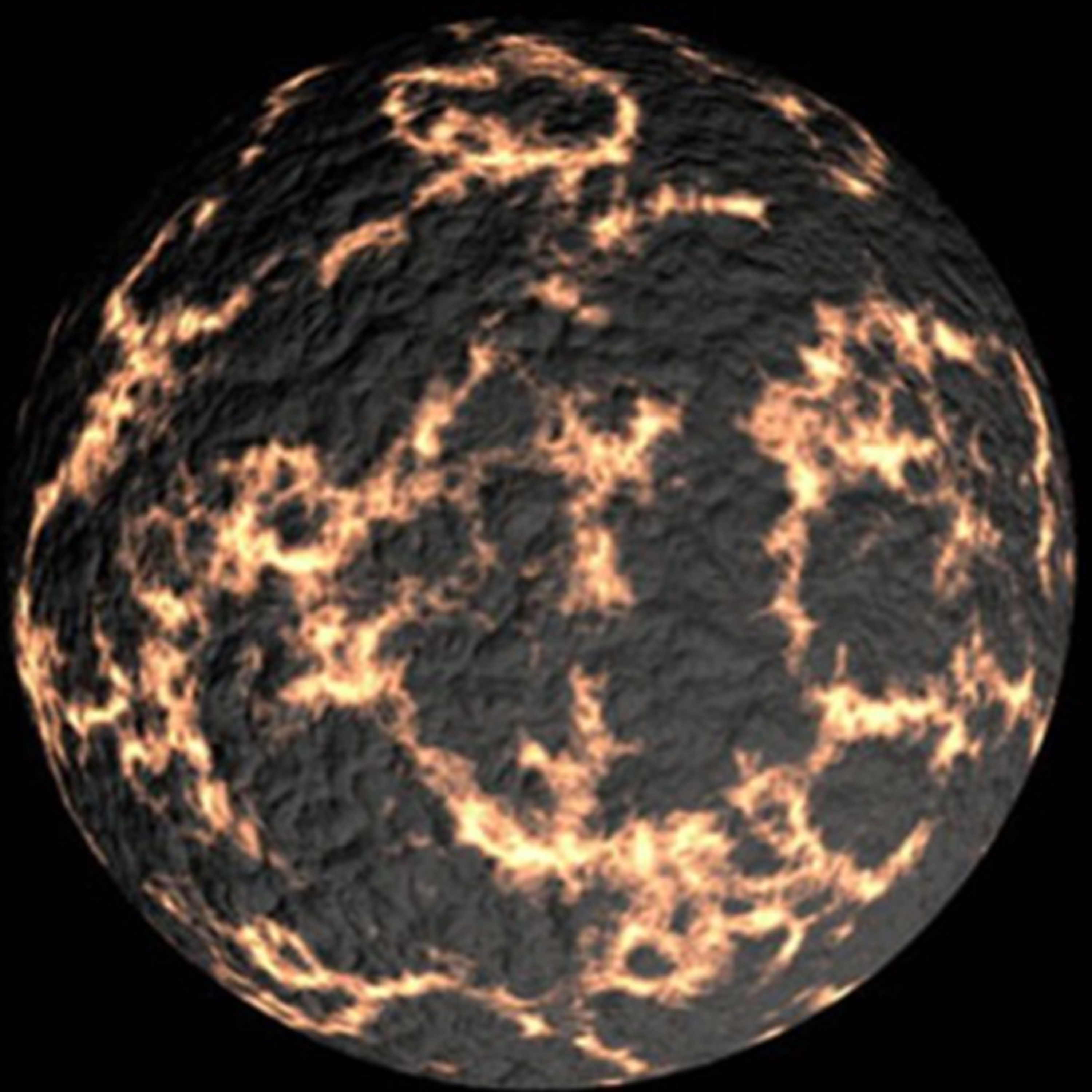 Geology BitesPeter Cawood on When Plate Tectonics StartedThe heat liberated during the formation of our planet created an ocean of magma. As it began to cool, the Earth differentiated into a dense metallic core surrounded by a less dense rocky mantle. At some point, we know that the surface of the Earth must have formed itself into the rigid blocks we call plates, and that these plates began to move and interact with each other as parts of the global process we call plate tectonics. But did the plates form and did plate tectonics start soon after the Earth differentiated into the metallic core and rocky man...2021-10-2330 min
Geology BitesPeter Cawood on When Plate Tectonics StartedThe heat liberated during the formation of our planet created an ocean of magma. As it began to cool, the Earth differentiated into a dense metallic core surrounded by a less dense rocky mantle. At some point, we know that the surface of the Earth must have formed itself into the rigid blocks we call plates, and that these plates began to move and interact with each other as parts of the global process we call plate tectonics. But did the plates form and did plate tectonics start soon after the Earth differentiated into the metallic core and rocky man...2021-10-2330 min Geology BitesBecky Flowers on Deciphering the Thermal History of RocksMany processes in geology affect the temperature of rocks. Erosion is one example — as a surface is eroded, the rocks below get closer to the surface, cooling as they go. So if we know the temperature history of a rock, we can infer its erosion history. Becky Flowers has a thermochronology lab in which she determines the cooling history of rocks as recorded in specific crystals they contain, such as zircon and apatite. She explains how this works, and how she has used her results to unravel histories such as that of the Grand Canyon, the South African plateau, and ev...2021-10-1730 min
Geology BitesBecky Flowers on Deciphering the Thermal History of RocksMany processes in geology affect the temperature of rocks. Erosion is one example — as a surface is eroded, the rocks below get closer to the surface, cooling as they go. So if we know the temperature history of a rock, we can infer its erosion history. Becky Flowers has a thermochronology lab in which she determines the cooling history of rocks as recorded in specific crystals they contain, such as zircon and apatite. She explains how this works, and how she has used her results to unravel histories such as that of the Grand Canyon, the South African plateau, and ev...2021-10-1730 min Geology BitesUlf Linnemann on the Assembly of Central Europe in the PaleozoicThe geological history of Central Europe is quite complicated. The region is composed of several continental blocks having quite distinct origins that came together over 300 million years ago in the Paleozoic Era. Then, in the Mesozoic, many of the original rocks were overlaid, and continued plate movements caused mountain belts to form. In a previous Geology Bites podcast, Douwe van Hinsbergen explained how he used an analysis of the geological structure of mountain belts to reconstruct tectonic plate motions. In this episode, we hear about a totally different approach to reconstructing plate motions and paleogeography, and see how it was...2021-10-0925 min
Geology BitesUlf Linnemann on the Assembly of Central Europe in the PaleozoicThe geological history of Central Europe is quite complicated. The region is composed of several continental blocks having quite distinct origins that came together over 300 million years ago in the Paleozoic Era. Then, in the Mesozoic, many of the original rocks were overlaid, and continued plate movements caused mountain belts to form. In a previous Geology Bites podcast, Douwe van Hinsbergen explained how he used an analysis of the geological structure of mountain belts to reconstruct tectonic plate motions. In this episode, we hear about a totally different approach to reconstructing plate motions and paleogeography, and see how it was...2021-10-0925 min Geology BitesDouwe van Hinsbergen on What Drives the Motions of Tectonic PlatesEver since Alfred Wegener proposed the theory of continental drift in 1912, we have been aware that blocks of the Earth’s lithosphere are moving with respect to each other. With the advent of plate tectonics in the 1960s, these moving blocks became identified with the tectonic plates that tile the Earth’s surface. We now have accurate measurements of plate motion speeds, which range from about ½ a cm per year to 10 cm per year. But there is still no general consensus as to what makes plates move. Broadly speaking, there are two competing explanations. In the first, the plates ride on to...2021-09-1926 min
Geology BitesDouwe van Hinsbergen on What Drives the Motions of Tectonic PlatesEver since Alfred Wegener proposed the theory of continental drift in 1912, we have been aware that blocks of the Earth’s lithosphere are moving with respect to each other. With the advent of plate tectonics in the 1960s, these moving blocks became identified with the tectonic plates that tile the Earth’s surface. We now have accurate measurements of plate motion speeds, which range from about ½ a cm per year to 10 cm per year. But there is still no general consensus as to what makes plates move. Broadly speaking, there are two competing explanations. In the first, the plates ride on to...2021-09-1926 min Geology BitesMathilde Cannat on Mid-Ocean RidgesOceanic plates are continually manufactured at mid-ocean spreading ridges. But exactly what processes go on at these ridges? It turns out that it depends on what type of ridge it is—fast-spreading or slow-spreading. And that our traditional view of vanishingly thin plate thickness at ridge axes is inaccurate. Mathilde Cannat describes our modern understanding of mid-ocean ridges and the observations that led us there.
Mathilde Cannat is a research director at the Institut de Physique du Globe of Paris. Her research on mid-ocean ridges has fundamentally changed our understanding of the geological processes that create new oceanic crust at these...2021-08-1929 min
Geology BitesMathilde Cannat on Mid-Ocean RidgesOceanic plates are continually manufactured at mid-ocean spreading ridges. But exactly what processes go on at these ridges? It turns out that it depends on what type of ridge it is—fast-spreading or slow-spreading. And that our traditional view of vanishingly thin plate thickness at ridge axes is inaccurate. Mathilde Cannat describes our modern understanding of mid-ocean ridges and the observations that led us there.
Mathilde Cannat is a research director at the Institut de Physique du Globe of Paris. Her research on mid-ocean ridges has fundamentally changed our understanding of the geological processes that create new oceanic crust at these...2021-08-1929 min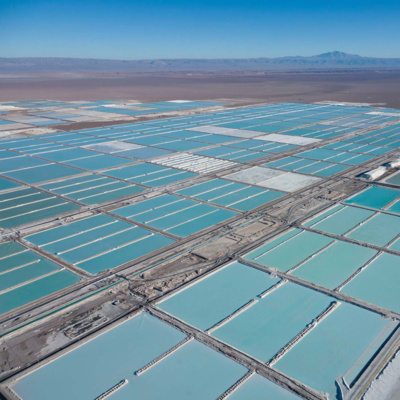 Geology BitesKathryn Goodenough on the Sources of Lithium for a Post-Carbon SocietyThe lithium-ion battery was invented about 40 years ago, and is now commonplace in a range of products, from smartphones to electric cars. But if we are to meet the carbon emission goals that governments are setting, electrification, and with it the need for electricity storage, will increase dramatically. Although many new electricity storage methods are being developed, none are as mature as the lithium-ion battery, which will therefore need to be a major part of a carbon-free infrastructure.
Kathryn Goodenough is Principal Geologist at the British Geological Survey. She studies the geology of critical raw materials, and...2021-08-0919 min
Geology BitesKathryn Goodenough on the Sources of Lithium for a Post-Carbon SocietyThe lithium-ion battery was invented about 40 years ago, and is now commonplace in a range of products, from smartphones to electric cars. But if we are to meet the carbon emission goals that governments are setting, electrification, and with it the need for electricity storage, will increase dramatically. Although many new electricity storage methods are being developed, none are as mature as the lithium-ion battery, which will therefore need to be a major part of a carbon-free infrastructure.
Kathryn Goodenough is Principal Geologist at the British Geological Survey. She studies the geology of critical raw materials, and...2021-08-0919 min Geology BitesSteve D'Hondt on Reviving a 100-Million-Year-Old Bacterial ColonyThe fossil record goes back through the Phanerozoic eon, about 540 million years, and even earlier, into the Ediacaran period. But while the fossils provide incontrovertible evidence of ancient life, the fossils themselves are certainly not alive. In fossils, the original organic matter belonging to the fossilized life form has been replaced by inorganic materials, cast into the shape formerly occupied by the life form. However, in some situations, the original organic matter does survive. For example, original spores as old as 350 million years have been identified using their original organic material. And DNA can survive for as much as a mil...2021-07-2829 min
Geology BitesSteve D'Hondt on Reviving a 100-Million-Year-Old Bacterial ColonyThe fossil record goes back through the Phanerozoic eon, about 540 million years, and even earlier, into the Ediacaran period. But while the fossils provide incontrovertible evidence of ancient life, the fossils themselves are certainly not alive. In fossils, the original organic matter belonging to the fossilized life form has been replaced by inorganic materials, cast into the shape formerly occupied by the life form. However, in some situations, the original organic matter does survive. For example, original spores as old as 350 million years have been identified using their original organic material. And DNA can survive for as much as a mil...2021-07-2829 min Geology BitesHarriet Lau on the Motions of the Earth on Timescales from Hours to MillenniaThe subfield of geology called geodynamics most commonly refers to the motions associated with convection in the mantle. These are slow by human standards and lead to phenomena such as plate motions, seafloor spreading, mountain building, and volcanos. But the Earth’s interior actually undergoes motion on a whole range of timescales. The shortest of these occurs within seismic waves – in which the vibrations triggered by earthquakes cause tiny elastic movements of the material as they pass through. And the longest of these are the large-scale viscous motions of the convecting mantle driven by the temperature difference between the bottom an...2021-06-1222 min
Geology BitesHarriet Lau on the Motions of the Earth on Timescales from Hours to MillenniaThe subfield of geology called geodynamics most commonly refers to the motions associated with convection in the mantle. These are slow by human standards and lead to phenomena such as plate motions, seafloor spreading, mountain building, and volcanos. But the Earth’s interior actually undergoes motion on a whole range of timescales. The shortest of these occurs within seismic waves – in which the vibrations triggered by earthquakes cause tiny elastic movements of the material as they pass through. And the longest of these are the large-scale viscous motions of the convecting mantle driven by the temperature difference between the bottom an...2021-06-1222 min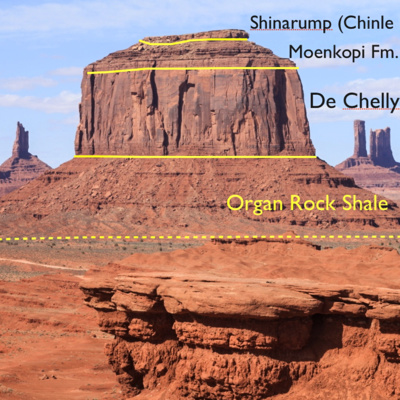 Geology BitesCraig Jones on the Iconic Landscapes of the American WesternsMany hundreds of films have been shot on location in the American West. The rugged, inhospitable landscapes are an integral part of what gives so many American Westerns their distinctive character. Although the region is vast, stretching from the Rockies in Wyoming and Colorado to Utah, New Mexico, Nevada, Arizona and California, a few locations have captured the lion’s share of the film industry’s attention. What is it about these landscapes that makes them so photogenic? And how did they get that way?
In this episode, Craig Jones casts light on the answers to these question...2021-06-0336 min
Geology BitesCraig Jones on the Iconic Landscapes of the American WesternsMany hundreds of films have been shot on location in the American West. The rugged, inhospitable landscapes are an integral part of what gives so many American Westerns their distinctive character. Although the region is vast, stretching from the Rockies in Wyoming and Colorado to Utah, New Mexico, Nevada, Arizona and California, a few locations have captured the lion’s share of the film industry’s attention. What is it about these landscapes that makes them so photogenic? And how did they get that way?
In this episode, Craig Jones casts light on the answers to these question...2021-06-0336 min Geology BitesClaude Jaupart on Whether the Earth is Cooling DownWe know the Earth was born as a baking inferno. So the presence of a relatively cool surface today suggests that the Earth has cooled a lot since it formed. But the very thin crust on which we subsist is not representative of the Earth as a whole, and although some heat must be escaping from the Earth, there are also ongoing sources of heat. So the answer to the question as to whether Earth is cooling down is not straightforward.
Claude Jaupart is Professor of Geophysics at the Université de Paris & Institut de Physique du Globe. H...2021-05-2630 min
Geology BitesClaude Jaupart on Whether the Earth is Cooling DownWe know the Earth was born as a baking inferno. So the presence of a relatively cool surface today suggests that the Earth has cooled a lot since it formed. But the very thin crust on which we subsist is not representative of the Earth as a whole, and although some heat must be escaping from the Earth, there are also ongoing sources of heat. So the answer to the question as to whether Earth is cooling down is not straightforward.
Claude Jaupart is Professor of Geophysics at the Université de Paris & Institut de Physique du Globe. H...2021-05-2630 min Geology BitesPeter Molnar on Why the Tibetan Plateau is So HighHow can we tell what is happening at the bottom of the lithosphere, especially in one of the most remote places on the planet? Peter Molnar describes how many diverse lines of evidence, from the fossil record to normal faulting point to abrupt elevation changes in Tibet, both before and well after India collided with it. He thinks this tells us that the bottom of the thickened lithosphere there is gravitationally unstable and hot enough to literally drip off into the asthenosphere below, after which the remaining lithosphere becomes more buoyant.
Peter Molnar is Professor of Geological Sc...2021-05-1329 min
Geology BitesPeter Molnar on Why the Tibetan Plateau is So HighHow can we tell what is happening at the bottom of the lithosphere, especially in one of the most remote places on the planet? Peter Molnar describes how many diverse lines of evidence, from the fossil record to normal faulting point to abrupt elevation changes in Tibet, both before and well after India collided with it. He thinks this tells us that the bottom of the thickened lithosphere there is gravitationally unstable and hot enough to literally drip off into the asthenosphere below, after which the remaining lithosphere becomes more buoyant.
Peter Molnar is Professor of Geological Sc...2021-05-1329 min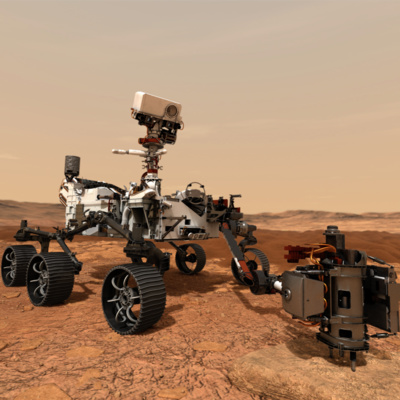 Geology BitesKatie Stack on Mapping the Geology of Mars with the Perseverance RoverKatie Stack is Deputy Project Scientist for the NASA Perseverance rover that landed in Jezero crater on Mars in February 2021. A geologist by training and an expert on the Martian sedimentary rock record, she has been mapping the geology of Mars since the 2000s. She leads a large team of scientists that will combine orbiter and rover image data to investigate processes that took place on the the ancient surface of Mars.
She describes what we are learning with the powerful instruments aboard Perseverance as it traverses an ancient Martian river delta deposit.
For podcast il...2021-05-0828 min
Geology BitesKatie Stack on Mapping the Geology of Mars with the Perseverance RoverKatie Stack is Deputy Project Scientist for the NASA Perseverance rover that landed in Jezero crater on Mars in February 2021. A geologist by training and an expert on the Martian sedimentary rock record, she has been mapping the geology of Mars since the 2000s. She leads a large team of scientists that will combine orbiter and rover image data to investigate processes that took place on the the ancient surface of Mars.
She describes what we are learning with the powerful instruments aboard Perseverance as it traverses an ancient Martian river delta deposit.
For podcast il...2021-05-0828 min Geology BitesJan Smit on Resolving a Single Hour of the Cataclysm That Ended the Cretaceous 66 Million Years AgoJan Smit is a paleontologist who specializes in abrupt changes in the geological record. After the discovery of an end-Cretaceous surge deposit in North Dakota, he was part of the team that pieced together the striking evidence it contained, particularly its perfectly preserved fossils and tiny glass spherules called tektites. He describes how this led to a detailed picture of the dramatic events that unfolded within an hour or two following the asteroid impact.
Jan Smit is Emeritus Professor of Event Stratigraphy at the Free University of Amsterdam. Initially a paleontologist studying planktonic foraminifera, he became intrigued by...2021-05-0327 min
Geology BitesJan Smit on Resolving a Single Hour of the Cataclysm That Ended the Cretaceous 66 Million Years AgoJan Smit is a paleontologist who specializes in abrupt changes in the geological record. After the discovery of an end-Cretaceous surge deposit in North Dakota, he was part of the team that pieced together the striking evidence it contained, particularly its perfectly preserved fossils and tiny glass spherules called tektites. He describes how this led to a detailed picture of the dramatic events that unfolded within an hour or two following the asteroid impact.
Jan Smit is Emeritus Professor of Event Stratigraphy at the Free University of Amsterdam. Initially a paleontologist studying planktonic foraminifera, he became intrigued by...2021-05-0327 min Geology BitesMarie Edmonds on Volcanic GasMarie Edmonds is Professor of Volcanology and Petrology at Cambridge University. She studies the cycling of volatile elements such as carbon between the atmosphere and the mantle and the role that volatiles play in melting, magma transport, and the style of volcanic eruptions. She describes how all volcanos emit gas and how the gas can reveal a lot about the origin of the magma and also forewarn of eruptions. Here is is monitoring gases emitted during the 2018 eruption of Kilauea on Hawaii.
For podcast illustrations and to learn more about Geology Bites, go to geologybites.com.
2021-05-0123 min
Geology BitesMarie Edmonds on Volcanic GasMarie Edmonds is Professor of Volcanology and Petrology at Cambridge University. She studies the cycling of volatile elements such as carbon between the atmosphere and the mantle and the role that volatiles play in melting, magma transport, and the style of volcanic eruptions. She describes how all volcanos emit gas and how the gas can reveal a lot about the origin of the magma and also forewarn of eruptions. Here is is monitoring gases emitted during the 2018 eruption of Kilauea on Hawaii.
For podcast illustrations and to learn more about Geology Bites, go to geologybites.com.
2021-05-0123 min Geology BitesGillian Foulger on Explaining Intra-Plate Volcanism Without Mantle PlumesGillian Foulger is a leading proponent of the plate hypothesis of volcanism, which posits that volcanism away from plate boundaries can be explained by extensional deformation of the lithosphere with melting of the upper mantle. The plate hypothesis uses plate tectonic theory to explain all volcanism without invoking plumes or hot-spots that originate in the lower mantle. She hosts a lively debate on whether mantle plumes exist at mantleplumes.org.
Gillian Foulger is Emerita Professor of Geophysics at Durham University. A key prediction of the plate hypothesis is that the lithosphere should be extending wherever we see int...2021-04-2629 min
Geology BitesGillian Foulger on Explaining Intra-Plate Volcanism Without Mantle PlumesGillian Foulger is a leading proponent of the plate hypothesis of volcanism, which posits that volcanism away from plate boundaries can be explained by extensional deformation of the lithosphere with melting of the upper mantle. The plate hypothesis uses plate tectonic theory to explain all volcanism without invoking plumes or hot-spots that originate in the lower mantle. She hosts a lively debate on whether mantle plumes exist at mantleplumes.org.
Gillian Foulger is Emerita Professor of Geophysics at Durham University. A key prediction of the plate hypothesis is that the lithosphere should be extending wherever we see int...2021-04-2629 min Geology BitesSarah Stewart on a New Scenario For How the Moon FormedSarah Stewart uses computer-based dynamical simulations and lab experiments to create scenarios for the collision of a massive body with the Earth that can reproduce the composition, orbits, and spins of the Earth and Moon today.
Sarah Stewart is a Professor in the Department of Earth and Planetary Sciences at the University of California Davis. In the podcast, she explains how, following a massive impact with another body, the Earth formed a synestia - an inflated disk of gas in which the impacting body and Earth were thoroughly mixed, and out of which the Moon and a ne...2021-04-2030 min
Geology BitesSarah Stewart on a New Scenario For How the Moon FormedSarah Stewart uses computer-based dynamical simulations and lab experiments to create scenarios for the collision of a massive body with the Earth that can reproduce the composition, orbits, and spins of the Earth and Moon today.
Sarah Stewart is a Professor in the Department of Earth and Planetary Sciences at the University of California Davis. In the podcast, she explains how, following a massive impact with another body, the Earth formed a synestia - an inflated disk of gas in which the impacting body and Earth were thoroughly mixed, and out of which the Moon and a ne...2021-04-2030 min Geology BitesDietmar Müller on Reconstructing Plate Motions Over a Billion Years of Earth HistoryDietmar Müller and his team have built interactive software to combine hundreds of diverse geological research studies into a single self-consistent picture of the plate-tectonic motions over deep time. He explains how this astonishing feat was accomplished and points out salient features in the results.
Dietmar Müller is Professor of Geophysics at the University of Sydney. In February 2021, his team published an animated billion-year plate reconstruction, which has had an enormous impact on the public.
Watch A Billion Years of Earth History in 40 Seconds
Go to geologybites.com for podcast illustrations and t...2021-04-0525 min
Geology BitesDietmar Müller on Reconstructing Plate Motions Over a Billion Years of Earth HistoryDietmar Müller and his team have built interactive software to combine hundreds of diverse geological research studies into a single self-consistent picture of the plate-tectonic motions over deep time. He explains how this astonishing feat was accomplished and points out salient features in the results.
Dietmar Müller is Professor of Geophysics at the University of Sydney. In February 2021, his team published an animated billion-year plate reconstruction, which has had an enormous impact on the public.
Watch A Billion Years of Earth History in 40 Seconds
Go to geologybites.com for podcast illustrations and t...2021-04-0525 min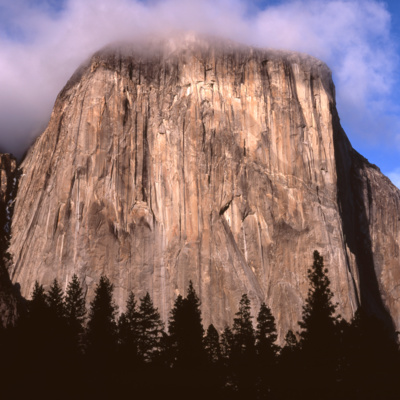 Geology BitesBob Anderson on How Geology Affects LandscapeBob Anderson is chair of the department of Geological Sciences at the University of Colorado Boulder. He is a geomorphologist who has studied many diverse aspects of the landscape, focusing recently on Alpine and Arctic landscapes in which ice plays a prominent role. It was his sense of awe and aesthetic appreciation of patterns in nature that drew him into the field.
In the podcast he uses the Sierras as a classic example of how the nature of the bedrock shapes landscape, and explains how the use of cosmogenic radionuclides has revolutionized our ability to uncover the ti...2021-03-2828 min
Geology BitesBob Anderson on How Geology Affects LandscapeBob Anderson is chair of the department of Geological Sciences at the University of Colorado Boulder. He is a geomorphologist who has studied many diverse aspects of the landscape, focusing recently on Alpine and Arctic landscapes in which ice plays a prominent role. It was his sense of awe and aesthetic appreciation of patterns in nature that drew him into the field.
In the podcast he uses the Sierras as a classic example of how the nature of the bedrock shapes landscape, and explains how the use of cosmogenic radionuclides has revolutionized our ability to uncover the ti...2021-03-2828 min Geology BitesDavid Evans on SupercontinentsMany of us have heard about the most recent supercontinent, which is called Pangea. But there is strong evidence for others with the earliest one now speculated to have formed in the Neoarchaean era about 2.7 billion years ago. So what makes us think they existed? And if they are real, how did they form and then break up?
David Evans is Professor of Earth and Planetary Sciences at Yale University. He is a true puzzle-master, piecing together all the available clues, especially those locked up in the magnetic fields imprinted into rocks when they formed, to trace...2021-03-2430 min
Geology BitesDavid Evans on SupercontinentsMany of us have heard about the most recent supercontinent, which is called Pangea. But there is strong evidence for others with the earliest one now speculated to have formed in the Neoarchaean era about 2.7 billion years ago. So what makes us think they existed? And if they are real, how did they form and then break up?
David Evans is Professor of Earth and Planetary Sciences at Yale University. He is a true puzzle-master, piecing together all the available clues, especially those locked up in the magnetic fields imprinted into rocks when they formed, to trace...2021-03-2430 min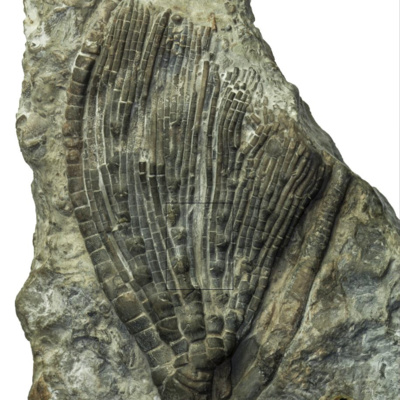 Geology BitesMike Howe on the UK National Geological RepositoryMany countries have national geological museums that house collections of rocks, minerals, and fossils. But the UK has two collections – the one at the Geological Museum in London, and, in addition, the National Geological Repository located near Nottingham, which is part of the British Geological Survey, and which is actually very much the larger of the two collections. How did the two collections come about? And what sort of things does the National Geological Repository hold?
Mike Howe is Head of the National Geological Repository. Under his leadership, the British Geological Survey has become a world leader in...2021-03-1421 min
Geology BitesMike Howe on the UK National Geological RepositoryMany countries have national geological museums that house collections of rocks, minerals, and fossils. But the UK has two collections – the one at the Geological Museum in London, and, in addition, the National Geological Repository located near Nottingham, which is part of the British Geological Survey, and which is actually very much the larger of the two collections. How did the two collections come about? And what sort of things does the National Geological Repository hold?
Mike Howe is Head of the National Geological Repository. Under his leadership, the British Geological Survey has become a world leader in...2021-03-1421 min Geology BitesLee Groat on How Gemstones FormGemstones have value not only because they are beautiful, but also because there are rare. So what exactly is a gemstone, and what make them so rare?
Lee Groat is a Professor in the Department of Earth, Ocean, and Atmospheric Sciences at the University of British Columbia. He studies the mineralogy of gemstones and also works in the field, having conducted surveys of parts of northern Canada looking for emeralds.
Go to geologybites.com for images of the gemstones discussed in the podcast and to learn more about Geology Bites.2021-03-0819 min
Geology BitesLee Groat on How Gemstones FormGemstones have value not only because they are beautiful, but also because there are rare. So what exactly is a gemstone, and what make them so rare?
Lee Groat is a Professor in the Department of Earth, Ocean, and Atmospheric Sciences at the University of British Columbia. He studies the mineralogy of gemstones and also works in the field, having conducted surveys of parts of northern Canada looking for emeralds.
Go to geologybites.com for images of the gemstones discussed in the podcast and to learn more about Geology Bites.2021-03-0819 min Geology BitesAllen McNamara on the Deep Mantle Structure of the EarthThe lower reaches of the Earth’s mantle extend all the way down to the boundary with the metallic core, which lies about 2,900 kilometers below the surface. We knew almost nothing about this highly inaccessible region until good seismic measurements became available in the 1970s. That coincided with a rapid increase in computer power, which enabled seismologists to generate images, albeit at very low resolution, of the entire mantle. The images surprised us by revealing some dramatic features in the lower mantle.
Allen McNamara is a Professor of Geological Sciences at Michigan State University. He uses computer-based fluid...2021-02-2826 min
Geology BitesAllen McNamara on the Deep Mantle Structure of the EarthThe lower reaches of the Earth’s mantle extend all the way down to the boundary with the metallic core, which lies about 2,900 kilometers below the surface. We knew almost nothing about this highly inaccessible region until good seismic measurements became available in the 1970s. That coincided with a rapid increase in computer power, which enabled seismologists to generate images, albeit at very low resolution, of the entire mantle. The images surprised us by revealing some dramatic features in the lower mantle.
Allen McNamara is a Professor of Geological Sciences at Michigan State University. He uses computer-based fluid...2021-02-2826 min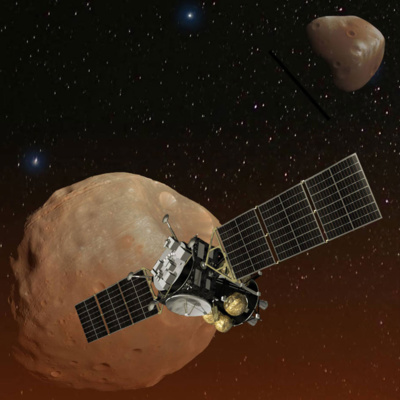 Geology BitesTomo Usui on the Mission to the Martian Moon PhobosThe rocky planets of the solar system have only three moons among them: our own Moon, and the two much smaller moons of Mars – Phobos and Deimos. There have been no successful missions to either of the Martian moons, but now the Japan Aerospace Exploration Agency is sending a probe to Phobos to be launched in 2024, to land and collect material from its surface, and return it to Earth. But why Phobos? What might we learn from such a mission?
Tomo Usui is a professor in the Department of Solar System Sciences at the Institute of Space and...2021-02-1218 min
Geology BitesTomo Usui on the Mission to the Martian Moon PhobosThe rocky planets of the solar system have only three moons among them: our own Moon, and the two much smaller moons of Mars – Phobos and Deimos. There have been no successful missions to either of the Martian moons, but now the Japan Aerospace Exploration Agency is sending a probe to Phobos to be launched in 2024, to land and collect material from its surface, and return it to Earth. But why Phobos? What might we learn from such a mission?
Tomo Usui is a professor in the Department of Solar System Sciences at the Institute of Space and...2021-02-1218 min Geology BitesRachel Wood on the Emergence of Complex Life in the PrecambrianThe Eon in which we live is called the Phanerozoic, which comes from the ancient Greek word for visible life. The eon starts with the Cambrian, which began 541 million years ago. But in recent decades it has become increasingly clear from the fossil record that there was visible life before the Cambrian, and complex life at that. So what caused it to emerge then, and what caused it to proliferate and diversify so vigorously in the early Cambrian?
Rachel Wood is Professor of Carbonate Geoscience at the University of Edinburgh. She and her team have uncovered fossils...2021-01-3130 min
Geology BitesRachel Wood on the Emergence of Complex Life in the PrecambrianThe Eon in which we live is called the Phanerozoic, which comes from the ancient Greek word for visible life. The eon starts with the Cambrian, which began 541 million years ago. But in recent decades it has become increasingly clear from the fossil record that there was visible life before the Cambrian, and complex life at that. So what caused it to emerge then, and what caused it to proliferate and diversify so vigorously in the early Cambrian?
Rachel Wood is Professor of Carbonate Geoscience at the University of Edinburgh. She and her team have uncovered fossils...2021-01-3130 min Geology BitesCarolina Lithgow-Bertelloni on Dynamic TopographyCarolina Lithgow-Bertelloni views plate tectonics and the Earth's topography as an expression of the interior processes of the Earth, and in particular of the horizontal and vertical motions of the mantle. Here she explains why we think that up to a full kilometer of the Earth's topography is caused by the mantle's direct push or pull on the lithosphere.
Carolina Lithgow-Bertelloni is a Professor of Geosciences at the University of California, Los Angeles.
Go to geologybites.com to see podcast illustrations and to learn about other Geology Bites episodes. 2021-01-1926 min
Geology BitesCarolina Lithgow-Bertelloni on Dynamic TopographyCarolina Lithgow-Bertelloni views plate tectonics and the Earth's topography as an expression of the interior processes of the Earth, and in particular of the horizontal and vertical motions of the mantle. Here she explains why we think that up to a full kilometer of the Earth's topography is caused by the mantle's direct push or pull on the lithosphere.
Carolina Lithgow-Bertelloni is a Professor of Geosciences at the University of California, Los Angeles.
Go to geologybites.com to see podcast illustrations and to learn about other Geology Bites episodes. 2021-01-1926 min Geology BitesCathy Constable on Mapping the Earth's Magnetic Field in Time and SpaceCathy Constable reconstructs global maps of the Earth’s magnetic field over timescales from millennia to millions of years using the remnant magnetism “frozen” into human artifacts and rocks. This has revealed surprising patterns of variation that in turn cast light on the processes in the Earth’s core that are responsible for generating the field.
Cathy Constable is a Professor at the Scripps Institution of Oceanography.
Go to geologybites.com to see an animation of the global magnetic field patterns around the time of the last major excursion about 40,000 years ago when the Earth's magnetic f...2021-01-0927 min
Geology BitesCathy Constable on Mapping the Earth's Magnetic Field in Time and SpaceCathy Constable reconstructs global maps of the Earth’s magnetic field over timescales from millennia to millions of years using the remnant magnetism “frozen” into human artifacts and rocks. This has revealed surprising patterns of variation that in turn cast light on the processes in the Earth’s core that are responsible for generating the field.
Cathy Constable is a Professor at the Scripps Institution of Oceanography.
Go to geologybites.com to see an animation of the global magnetic field patterns around the time of the last major excursion about 40,000 years ago when the Earth's magnetic f...2021-01-0927 min Geology BitesBärbel Hönisch on Reconstructing Climate in the Distant PastBärbel Hönisch uses the skeletal remains of foraminifera as her raw material in reconstructing ocean and atmospheric conditions that prevailed in past geological periods. Trace chemical constituents in these creatures can record the temperature of the ocean and carbon dioxide of the atmosphere. Climate models being applied to the present day are being validated by what she is discovering about the planet’s past evolution.
Go to geologybites.com for illustrations relating to this podcast and to learn more about Geology Bites.2020-12-1825 min
Geology BitesBärbel Hönisch on Reconstructing Climate in the Distant PastBärbel Hönisch uses the skeletal remains of foraminifera as her raw material in reconstructing ocean and atmospheric conditions that prevailed in past geological periods. Trace chemical constituents in these creatures can record the temperature of the ocean and carbon dioxide of the atmosphere. Climate models being applied to the present day are being validated by what she is discovering about the planet’s past evolution.
Go to geologybites.com for illustrations relating to this podcast and to learn more about Geology Bites.2020-12-1825 min Geology BitesDavid Rothery on Volcanism in the Solar SystemDavid Rothery investigates volcanism on Earth and elsewhere in the Solar System using remote-sensing Earth-orbiting satellites and space probes. Mercury is his present focus, and he is lead co-investigator for geology on the X-ray spectrometer aboard BepiColombo, an ESA mission currently on its way to Mercury. He describes some intriguing puzzles about Mercury that he hopes BepiColombo will resolve, as well as a type of volcanism occurring on some icy bodies in the outer solar system called cryovolcanism.
Go to geologybites.com for illustrations supporting this podcast and to learn more about Geology Bites. 2020-12-0329 min
Geology BitesDavid Rothery on Volcanism in the Solar SystemDavid Rothery investigates volcanism on Earth and elsewhere in the Solar System using remote-sensing Earth-orbiting satellites and space probes. Mercury is his present focus, and he is lead co-investigator for geology on the X-ray spectrometer aboard BepiColombo, an ESA mission currently on its way to Mercury. He describes some intriguing puzzles about Mercury that he hopes BepiColombo will resolve, as well as a type of volcanism occurring on some icy bodies in the outer solar system called cryovolcanism.
Go to geologybites.com for illustrations supporting this podcast and to learn more about Geology Bites. 2020-12-0329 min Geology BitesHarold C. Connolly Jr. on Bringing an Asteroid Sample Back to EarthThere are some things we just cannot learn about other bodies in the solar system without actually having our hands on a sample of the body and analyzing it on Earth using the battery of techniques that have been refined for the analysis of terrestrial rocks. Harold C. Connolly Jr. is Professor and Founding Chair at the Department of Geology at Rowan University. He investigates the origin of the very oldest planetary materials from which the Earth was made. Asteroids are a good place to look for such materials, and, to that end, he is Mission Sample Scientist for OSIR...2020-11-2825 min
Geology BitesHarold C. Connolly Jr. on Bringing an Asteroid Sample Back to EarthThere are some things we just cannot learn about other bodies in the solar system without actually having our hands on a sample of the body and analyzing it on Earth using the battery of techniques that have been refined for the analysis of terrestrial rocks. Harold C. Connolly Jr. is Professor and Founding Chair at the Department of Geology at Rowan University. He investigates the origin of the very oldest planetary materials from which the Earth was made. Asteroids are a good place to look for such materials, and, to that end, he is Mission Sample Scientist for OSIR...2020-11-2825 min Geology BitesLaurent Jolivet on the Origin of the MediterraneanLaurent Jolivet is an expert on the dynamics of tectonic plates and the mantle and is a Professor at the Institute of Earth Sciences at the Sorbonne University. He combines satellite measurements, seismic tomography, field observations, and computer modeling to reconstruct plate motions, even in some of the most complicated parts of the world. Here he unravels the tangled evolution of the Mediterranean.
Visit geologybites.com to see maps and animations of the Mediterranean's geological history and of the processes discussed in the podcast. 2020-11-2129 min
Geology BitesLaurent Jolivet on the Origin of the MediterraneanLaurent Jolivet is an expert on the dynamics of tectonic plates and the mantle and is a Professor at the Institute of Earth Sciences at the Sorbonne University. He combines satellite measurements, seismic tomography, field observations, and computer modeling to reconstruct plate motions, even in some of the most complicated parts of the world. Here he unravels the tangled evolution of the Mediterranean.
Visit geologybites.com to see maps and animations of the Mediterranean's geological history and of the processes discussed in the podcast. 2020-11-2129 min Geology BitesSir Mark Moody-Stuart on Transitioning to a Post-Carbon EconomySir Mark Moody-Stuart is a former chairman of Royal Dutch Shell and is a director of Saudi Aramco, which has the largest daily oil production of any oil-producing company.
He obtained a PhD on the Devonian sediments of Spitsbergen before joining Shell, where he started his career as a geologist in Spain, Oman, Brunei, and Australia.
After recognizing that our response to global warming demands a transformation of our energy strategy, he became a prominent voice for change in the oil industry. Here, he discusses how he sees this change coming about.
Go to g...2020-11-1929 min
Geology BitesSir Mark Moody-Stuart on Transitioning to a Post-Carbon EconomySir Mark Moody-Stuart is a former chairman of Royal Dutch Shell and is a director of Saudi Aramco, which has the largest daily oil production of any oil-producing company.
He obtained a PhD on the Devonian sediments of Spitsbergen before joining Shell, where he started his career as a geologist in Spain, Oman, Brunei, and Australia.
After recognizing that our response to global warming demands a transformation of our energy strategy, he became a prominent voice for change in the oil industry. Here, he discusses how he sees this change coming about.
Go to g...2020-11-1929 min Geology BitesJohn Marshall on the Riddle of the Mass Extinction 360 Million Years AgoThe Earth has endured many mass extinctions. We are pretty confident that we know what caused these events. Except for one of them: the one at the end of the Devonian period 360 million years ago. John Marshall is a fossil expert specializing in mass extinction events and is a Professor at the School of Ocean & Earth Science at the University of Southampton. He explains how his recent research has uncovered new evidence that may finally explain what caused the end-Devonian mass extinction.
Go to geologybites.com for illustrations that support this podcast and to learn more about the...2020-11-0125 min
Geology BitesJohn Marshall on the Riddle of the Mass Extinction 360 Million Years AgoThe Earth has endured many mass extinctions. We are pretty confident that we know what caused these events. Except for one of them: the one at the end of the Devonian period 360 million years ago. John Marshall is a fossil expert specializing in mass extinction events and is a Professor at the School of Ocean & Earth Science at the University of Southampton. He explains how his recent research has uncovered new evidence that may finally explain what caused the end-Devonian mass extinction.
Go to geologybites.com for illustrations that support this podcast and to learn more about the...2020-11-0125 min Geology BitesLaurence Robb on Where our Mineral Resources Come FromSo much of what we make starts with materials we extract from the Earth. Some of these materials make up only a tiny proportion of our planet, but fortunately for us, they are concentrated in certain places, which makes it possible to extract them in economically viable quantities. So how exactly do these materials become concentrated?
Lawrence Robb is a Visiting Professor at the Department of Earth Sciences at Oxford University. By analyzing the relationship between mineral deposits, principally in Africa and Asia, and our latest understanding of plate tectonics and mountain-building, he has unraveled the processes that f...2020-10-2928 min
Geology BitesLaurence Robb on Where our Mineral Resources Come FromSo much of what we make starts with materials we extract from the Earth. Some of these materials make up only a tiny proportion of our planet, but fortunately for us, they are concentrated in certain places, which makes it possible to extract them in economically viable quantities. So how exactly do these materials become concentrated?
Lawrence Robb is a Visiting Professor at the Department of Earth Sciences at Oxford University. By analyzing the relationship between mineral deposits, principally in Africa and Asia, and our latest understanding of plate tectonics and mountain-building, he has unraveled the processes that f...2020-10-2928 min Geology BitesBruce Buffett on Probing the Earth's CoreBruce Buffett is a Professor in the Department of Earth and Planetary Science at the University of California, Berkeley. He investigates the structure and motions within the Earth’s core by matching physics-based simulations of the core to the observed magnetic field of the Earth.
Go to geologybites.com for diagrams that support this podcast episode as well as more about the Geology Bites podcast series.2020-10-2125 min
Geology BitesBruce Buffett on Probing the Earth's CoreBruce Buffett is a Professor in the Department of Earth and Planetary Science at the University of California, Berkeley. He investigates the structure and motions within the Earth’s core by matching physics-based simulations of the core to the observed magnetic field of the Earth.
Go to geologybites.com for diagrams that support this podcast episode as well as more about the Geology Bites podcast series.2020-10-2125 min Geology BitesDavid Sandwell on Seeing Plate Tectonics Under the OceansDavid Sandwell uses satellites to make accurate measurements of the shape of the ocean surface. He explains how this enabled him to create a global map of the topography on the sea-floor. This revealed the global extent of classic plate-tectonic features, such as spreading ridges and transform faults, but also intriguing new features we still do not understand.
David Sandwell is a Professor at Scripps Institution of Oceanography at the University of California San Diego.2020-10-0229 min
Geology BitesDavid Sandwell on Seeing Plate Tectonics Under the OceansDavid Sandwell uses satellites to make accurate measurements of the shape of the ocean surface. He explains how this enabled him to create a global map of the topography on the sea-floor. This revealed the global extent of classic plate-tectonic features, such as spreading ridges and transform faults, but also intriguing new features we still do not understand.
David Sandwell is a Professor at Scripps Institution of Oceanography at the University of California San Diego.2020-10-0229 min Geology BitesBarbara Romanowicz on Seeing Deep into the EarthBarbara Romanowicz uses the seismic waves triggered by earthquakes to probe the interior of the Earth. She has forged new techniques for analyzing these waves to give us a much sharper view of the deep structure of the Earth. She is a Professor of the Graduate School at the University of California at Berkeley, and Chair of Physics of the Earth’s Interior at the Collège de France in Paris.2020-09-2827 min
Geology BitesBarbara Romanowicz on Seeing Deep into the EarthBarbara Romanowicz uses the seismic waves triggered by earthquakes to probe the interior of the Earth. She has forged new techniques for analyzing these waves to give us a much sharper view of the deep structure of the Earth. She is a Professor of the Graduate School at the University of California at Berkeley, and Chair of Physics of the Earth’s Interior at the Collège de France in Paris.2020-09-2827 min Geology BitesJohn Valley on the Early EarthThe Earth was formed just over 4.5 billion years ago. What happened just after it formed and what were conditions like then? John Valley reveals what we have managed to discover about our planet’s very distant past, and how we did it.2020-09-2026 min
Geology BitesJohn Valley on the Early EarthThe Earth was formed just over 4.5 billion years ago. What happened just after it formed and what were conditions like then? John Valley reveals what we have managed to discover about our planet’s very distant past, and how we did it.2020-09-2026 min Geology BitesSara Russell on What the Asteroids Can Tell Us About the EarthThe asteroid belt lies between the orbits of Mars and Jupiter. It formed out of the same protoplanetary disc as the Earth, but many asteroids have barely changed since then. Sara Russell explains what these time capsules can reveal about the Earth and how we will learn much more from the spacecraft currently fetching and returning asteroid samples to Earth.
Sara Russell is a professor of planetary sciences and leader of the Planetary Materials Group at the Natural History Museum in London. Her research seeks to unravel how the solar system formed and cast light on questions such...2020-09-1822 min
Geology BitesSara Russell on What the Asteroids Can Tell Us About the EarthThe asteroid belt lies between the orbits of Mars and Jupiter. It formed out of the same protoplanetary disc as the Earth, but many asteroids have barely changed since then. Sara Russell explains what these time capsules can reveal about the Earth and how we will learn much more from the spacecraft currently fetching and returning asteroid samples to Earth.
Sara Russell is a professor of planetary sciences and leader of the Planetary Materials Group at the Natural History Museum in London. Her research seeks to unravel how the solar system formed and cast light on questions such...2020-09-1822 min Geology BitesClare Warren on Divining the History of a RockMost rocks were formed many millions of years ago. Since then, some have been largely left alone, while others have been baked at high temperatures and buried at great depths. Clare Warren explains how we can now uncover remarkably precise histories of such rocks, even if they have been through more than one episode of such extreme treatment.
Clare Warren is a Senior Lecturer in the School of Environment, Earth and Ecosystem Sciences at The Open University.
For more on Geology Bites, go to geologybites.com, where you can al...2020-08-1023 min
Geology BitesClare Warren on Divining the History of a RockMost rocks were formed many millions of years ago. Since then, some have been largely left alone, while others have been baked at high temperatures and buried at great depths. Clare Warren explains how we can now uncover remarkably precise histories of such rocks, even if they have been through more than one episode of such extreme treatment.
Clare Warren is a Senior Lecturer in the School of Environment, Earth and Ecosystem Sciences at The Open University.
For more on Geology Bites, go to geologybites.com, where you can al...2020-08-1023 min Geology BitesSteve Sparks on What Makes a Volcano EruptWhy do some volcanoes erupt almost all the time but others lie dormant for centuries, millennia, or even longer? Steve Sparks has turned our ideas about volcanoes upside down. Not quite literally, but by applying the physics of fluid motion to the rocks and magma below volcanoes, he discovered that magma forms at much greater depths than previously thought, eventually forming an unstable blob that forces its way up through as much as a hundred kilometres of overlying rocks to erupt from a volcano. It is how quickly such blobs form that determines how frequently a volcano will erupt.
2020-08-0223 min
Geology BitesSteve Sparks on What Makes a Volcano EruptWhy do some volcanoes erupt almost all the time but others lie dormant for centuries, millennia, or even longer? Steve Sparks has turned our ideas about volcanoes upside down. Not quite literally, but by applying the physics of fluid motion to the rocks and magma below volcanoes, he discovered that magma forms at much greater depths than previously thought, eventually forming an unstable blob that forces its way up through as much as a hundred kilometres of overlying rocks to erupt from a volcano. It is how quickly such blobs form that determines how frequently a volcano will erupt.
2020-08-0223 min Geology BitesDan McKenzie on What Venus Can Tell Us About the EarthWhy look to another planet to reveal something new about the Earth? Dan McKenzie describes an ingenious way of using the data sent back from the Magellan Venus orbiter to discover that Venus is covered with an elastic plate about 30 kilometers thick. Explaining this very unexpected result revealed something extraordinary about the Earth.
For more on Geology Bites, go to geologybites.com, where you can also find diagrams and pictures that support the podcast.2020-07-2923 min
Geology BitesDan McKenzie on What Venus Can Tell Us About the EarthWhy look to another planet to reveal something new about the Earth? Dan McKenzie describes an ingenious way of using the data sent back from the Magellan Venus orbiter to discover that Venus is covered with an elastic plate about 30 kilometers thick. Explaining this very unexpected result revealed something extraordinary about the Earth.
For more on Geology Bites, go to geologybites.com, where you can also find diagrams and pictures that support the podcast.2020-07-2923 min Geology BitesJames Jackson on the Fatal Attraction Between Cities and EarthquakesIn this episode, James Jackson explains what happens, geologically-speaking, during an earthquake, why they strike where they do, and why earthquake-prone places are such attractive places to live.
For more on Geology Bites, go to geologybites.com, where you can also find diagrams and pictures that support the podcast.2020-07-2829 min
Geology BitesJames Jackson on the Fatal Attraction Between Cities and EarthquakesIn this episode, James Jackson explains what happens, geologically-speaking, during an earthquake, why they strike where they do, and why earthquake-prone places are such attractive places to live.
For more on Geology Bites, go to geologybites.com, where you can also find diagrams and pictures that support the podcast.2020-07-2829 min Geology BitesMike Searle on Why Mountains ExistMike Searle applies the theory of plate tectonics to explain what causes mountains of all kinds to form. They range from enormous mountain belts such as those that stretch from the Himalaya to the Alps, to mid-ocean volcanoes such as Hawaii.
Mike Searle is Professor of Earth Sciences at Oxford University. For over 30 years he has been studying the Himalaya, Karakoram, and the Tibetan Plateau. He has summarized his work in a richly illustrated book entitled Colliding Continents.
For illustrations that support the podcast go to geologybites.com.2020-07-2727 min
Geology BitesMike Searle on Why Mountains ExistMike Searle applies the theory of plate tectonics to explain what causes mountains of all kinds to form. They range from enormous mountain belts such as those that stretch from the Himalaya to the Alps, to mid-ocean volcanoes such as Hawaii.
Mike Searle is Professor of Earth Sciences at Oxford University. For over 30 years he has been studying the Himalaya, Karakoram, and the Tibetan Plateau. He has summarized his work in a richly illustrated book entitled Colliding Continents.
For illustrations that support the podcast go to geologybites.com.2020-07-2727 min